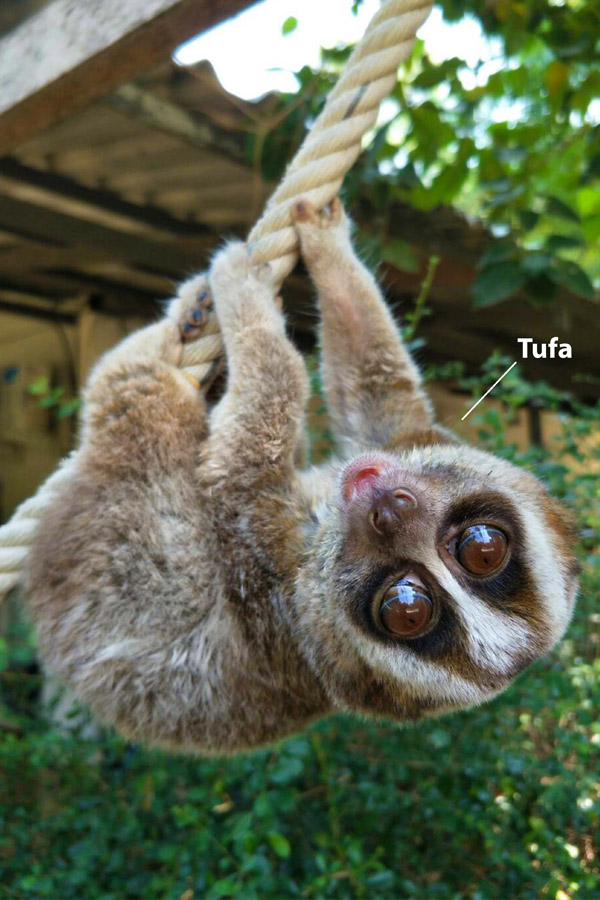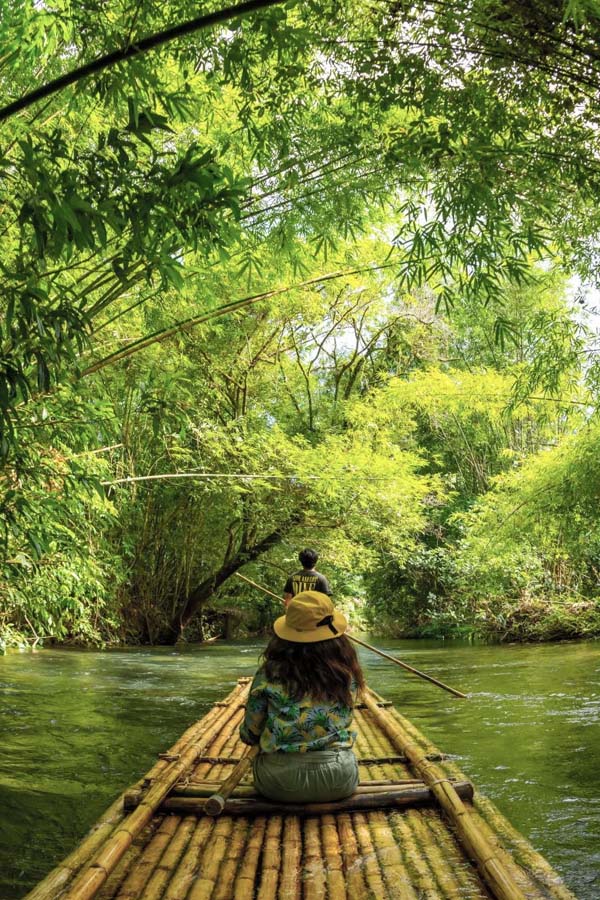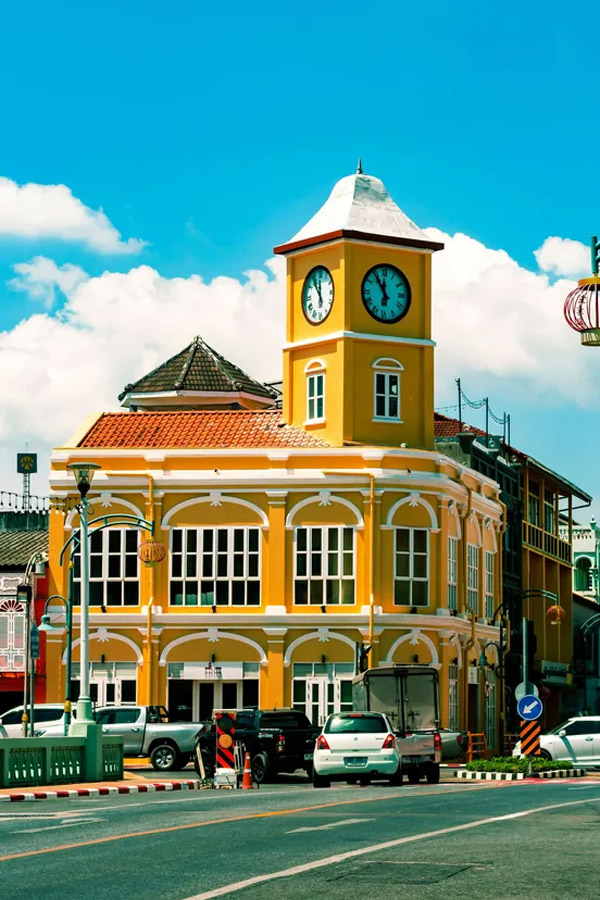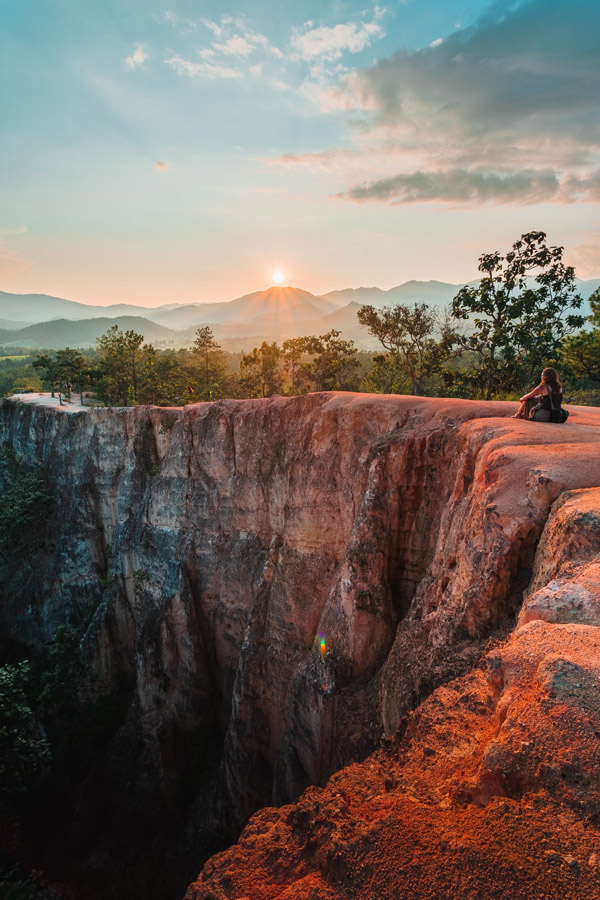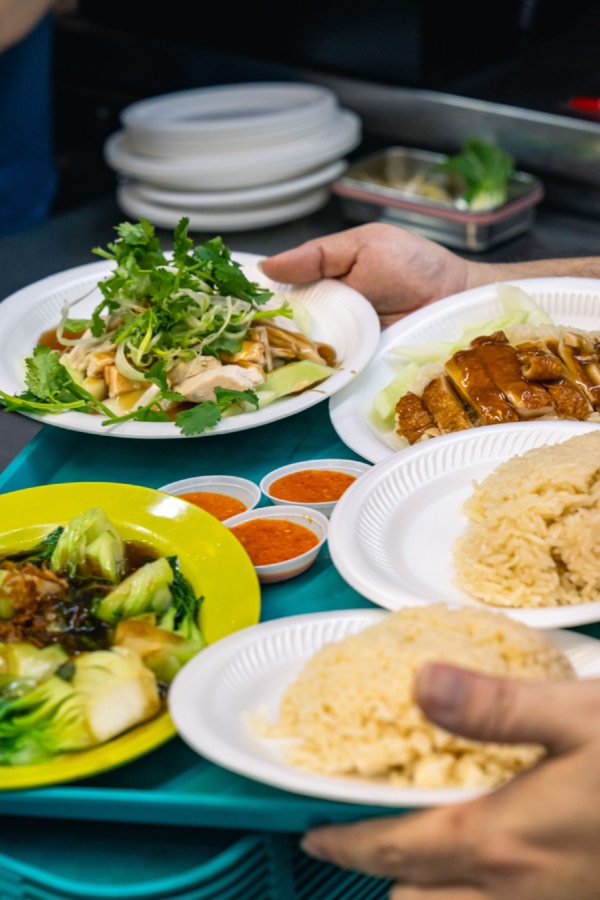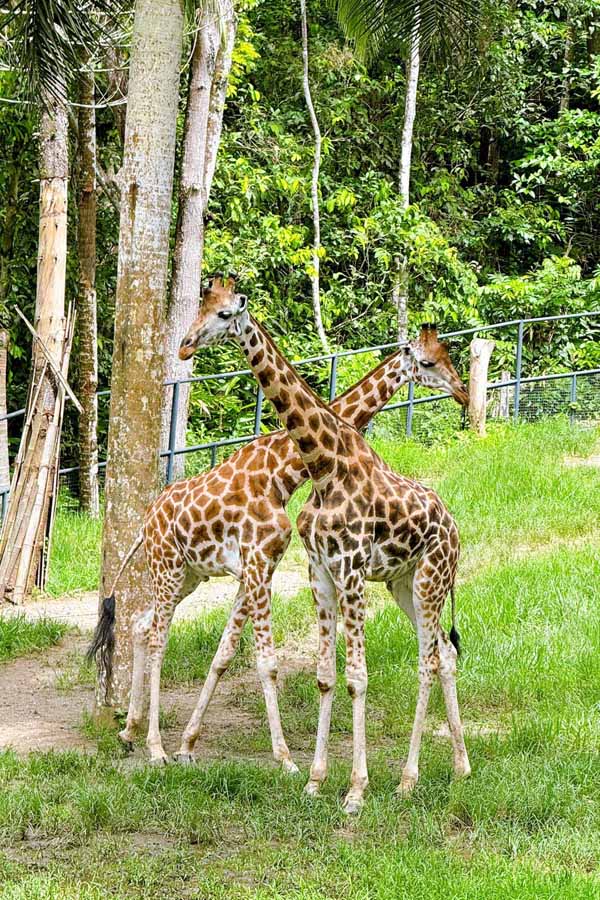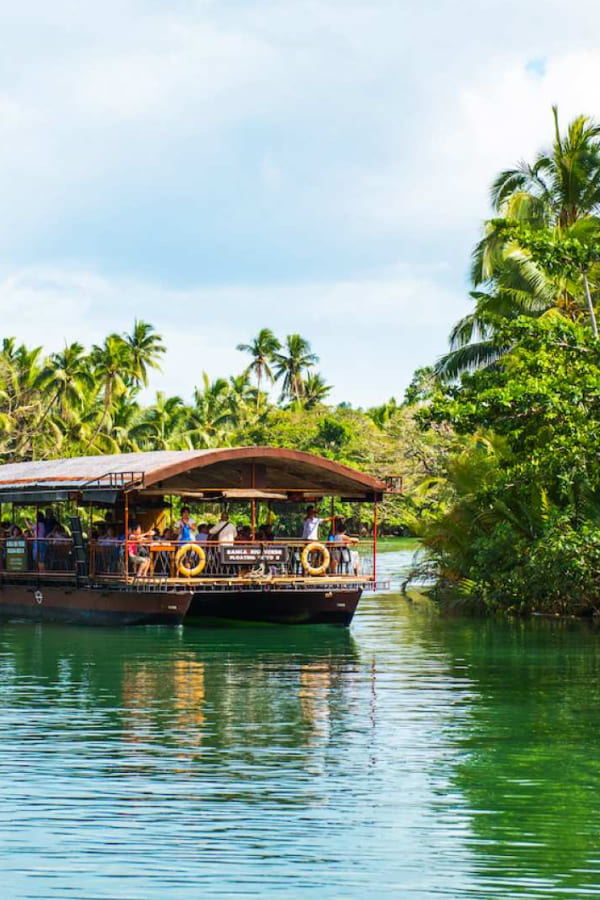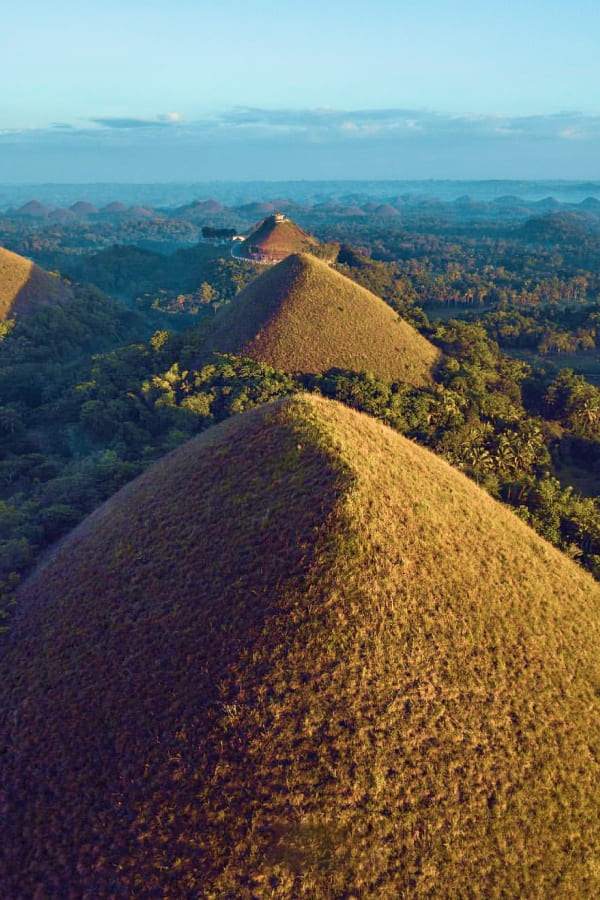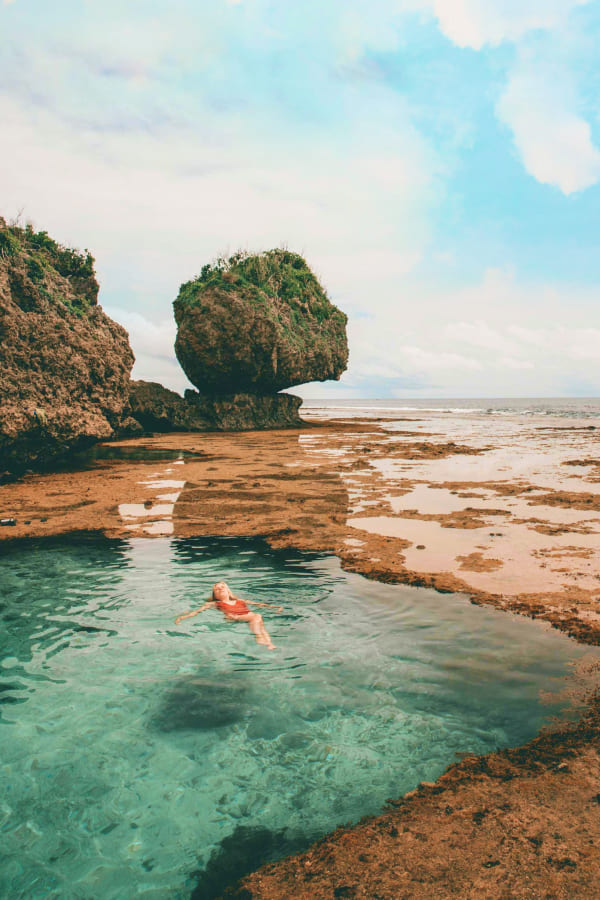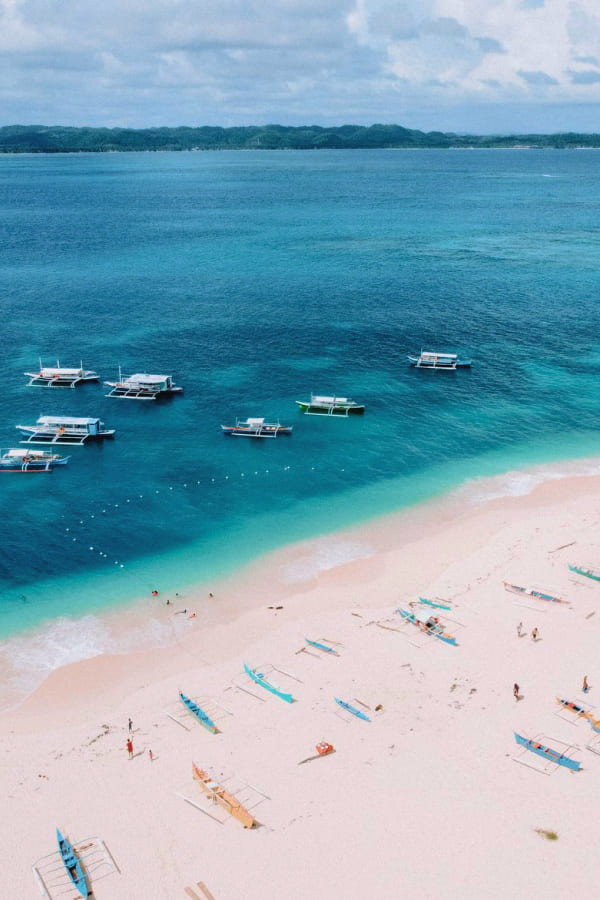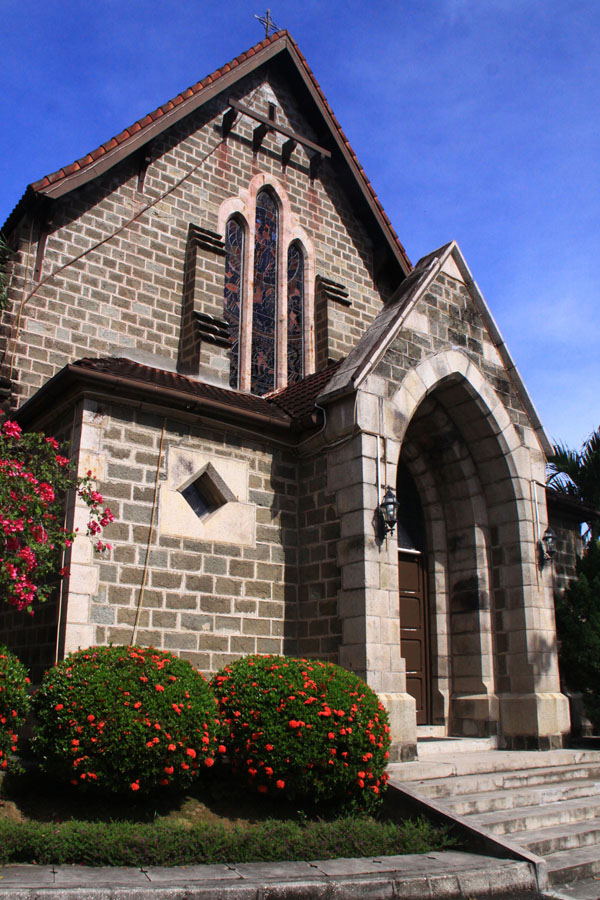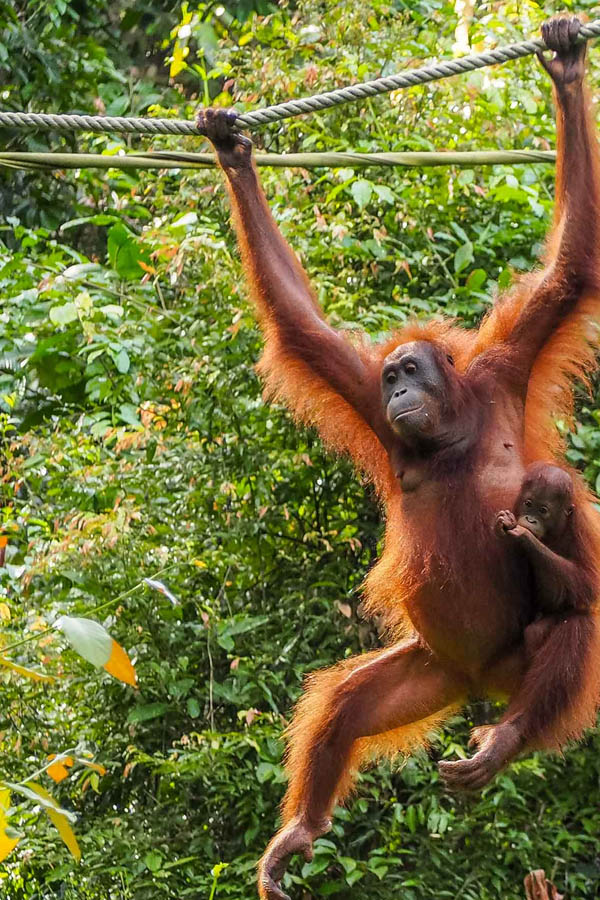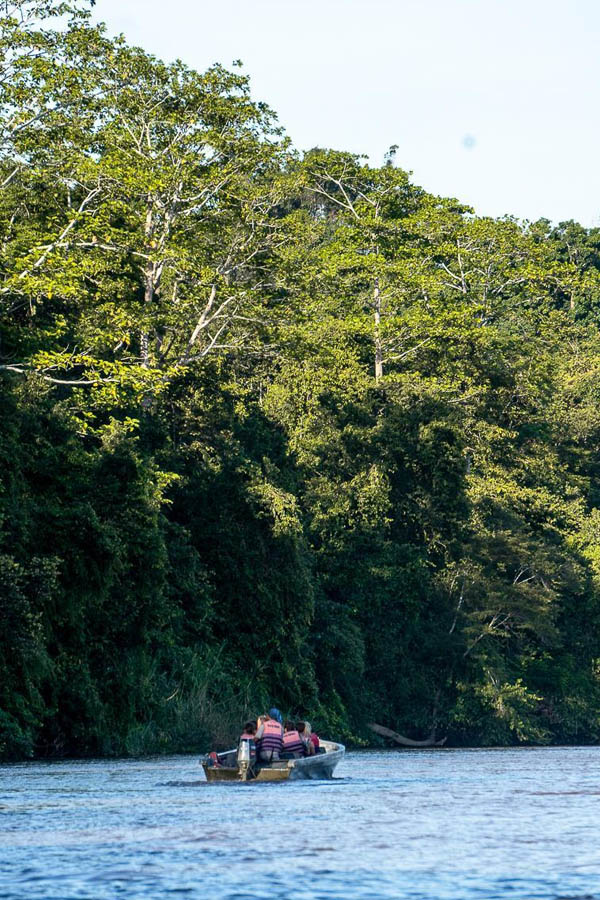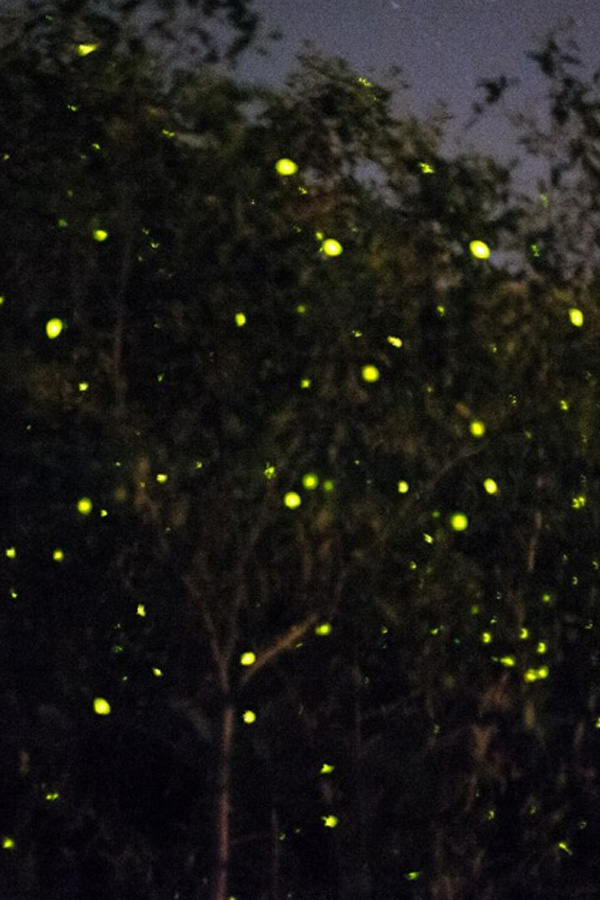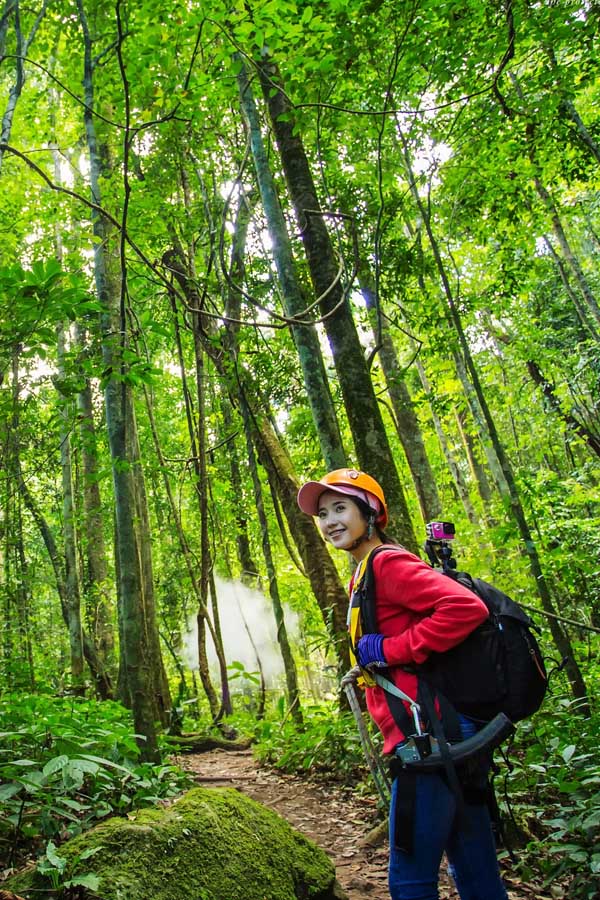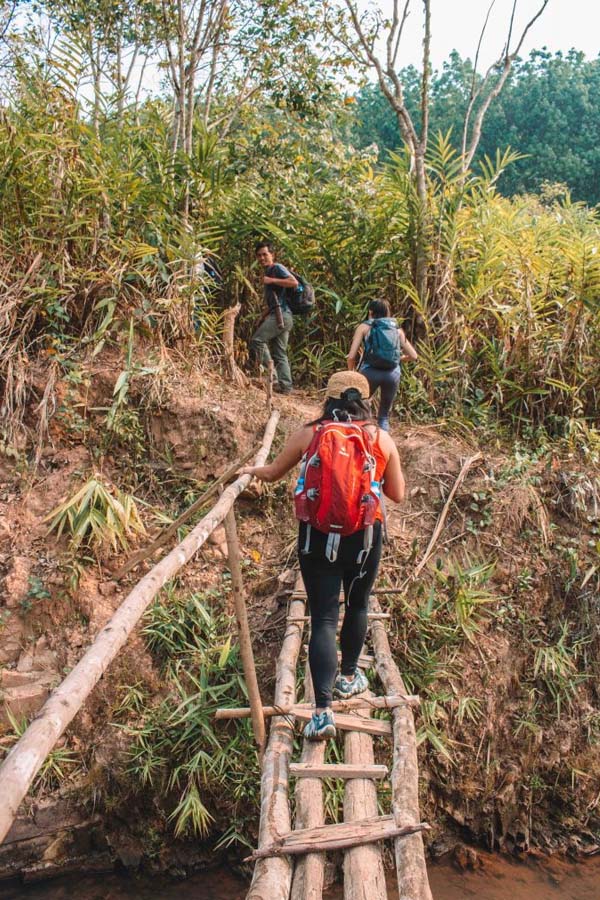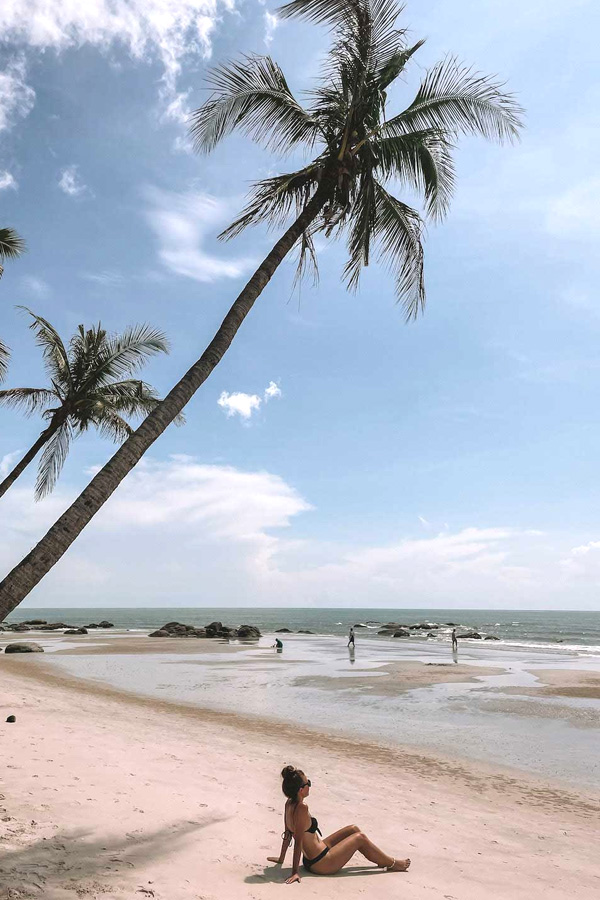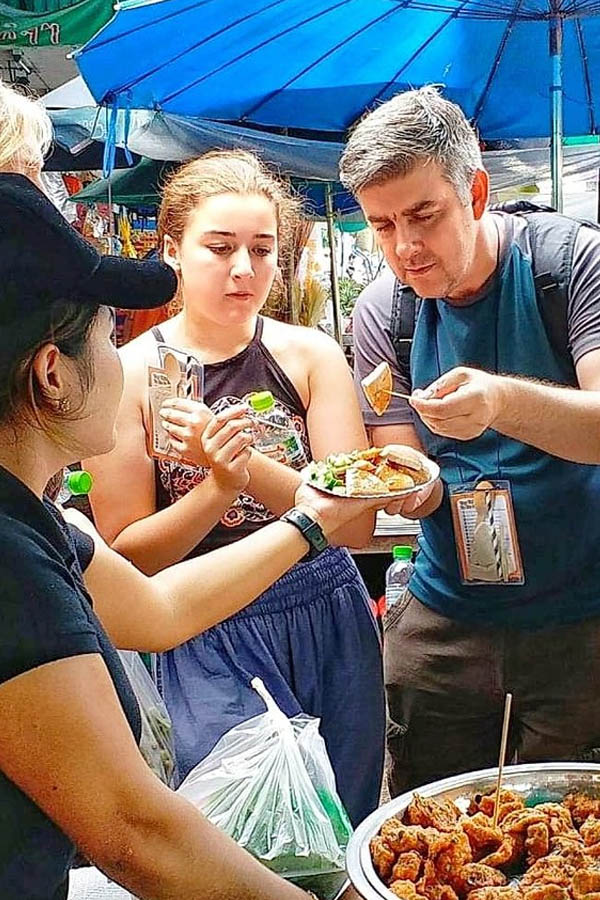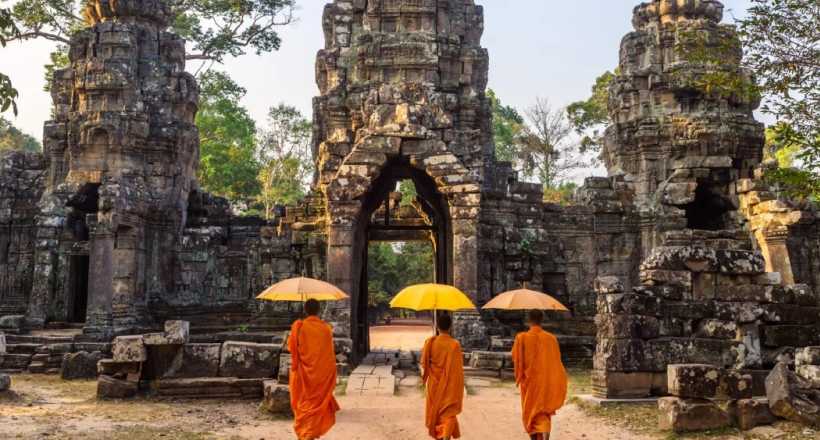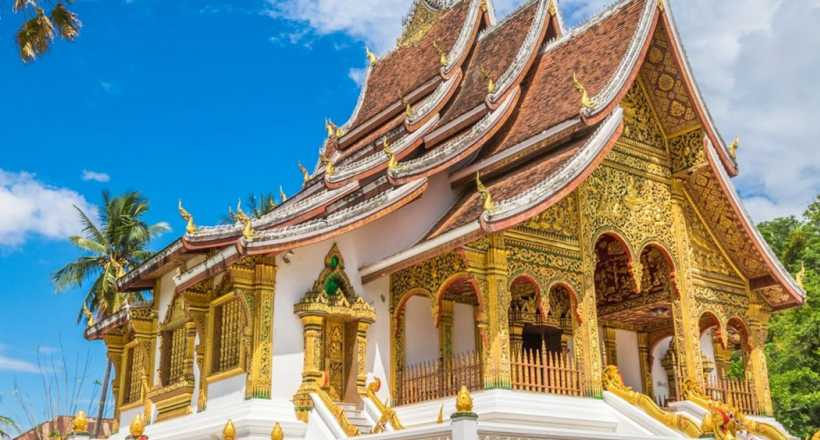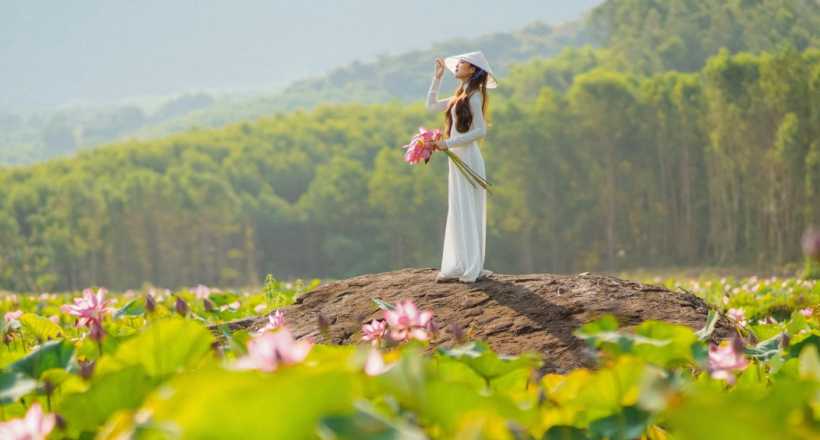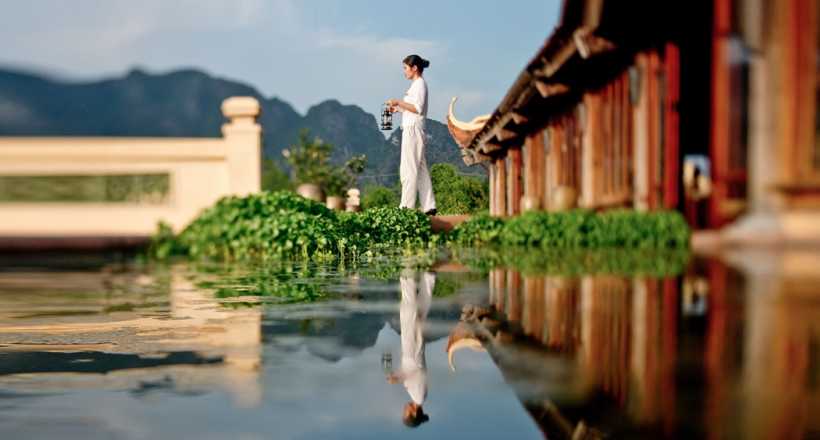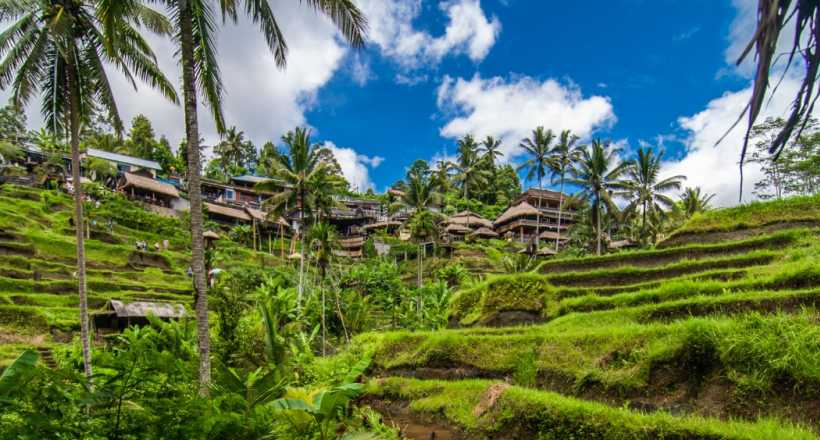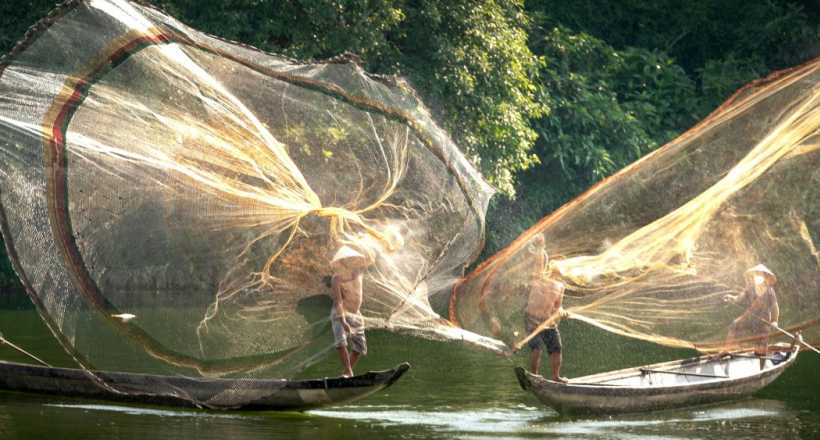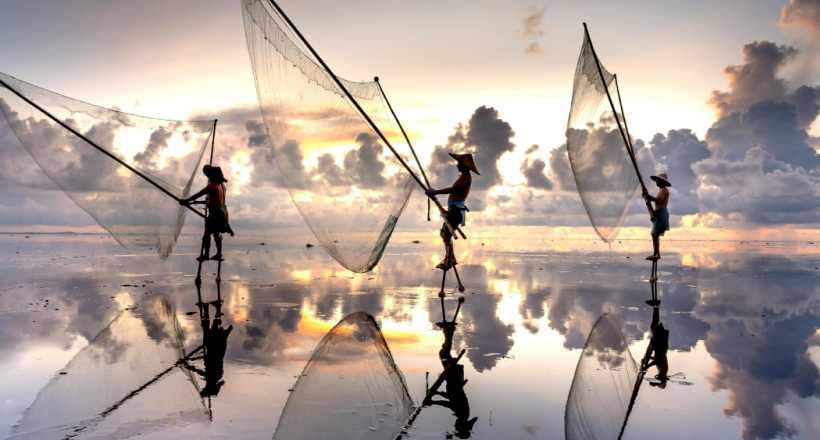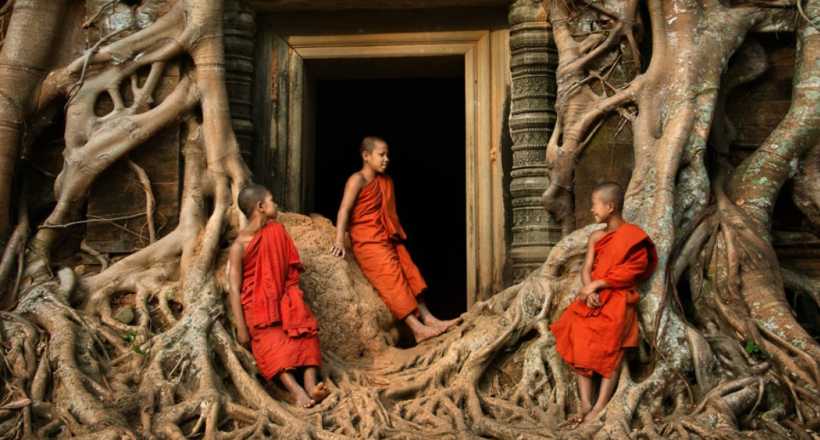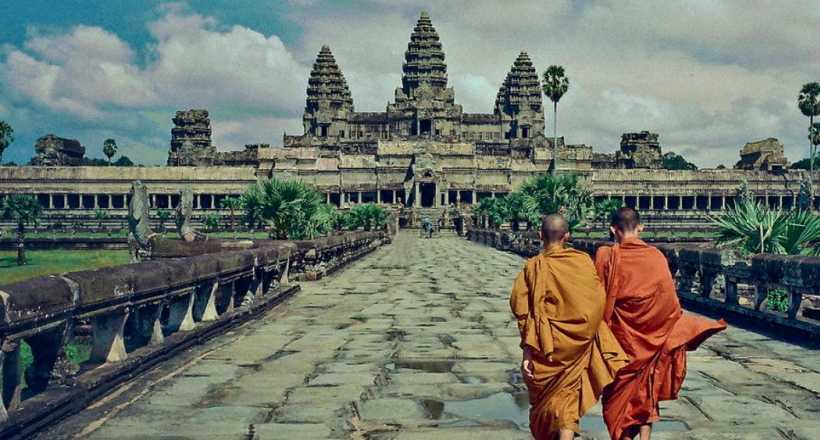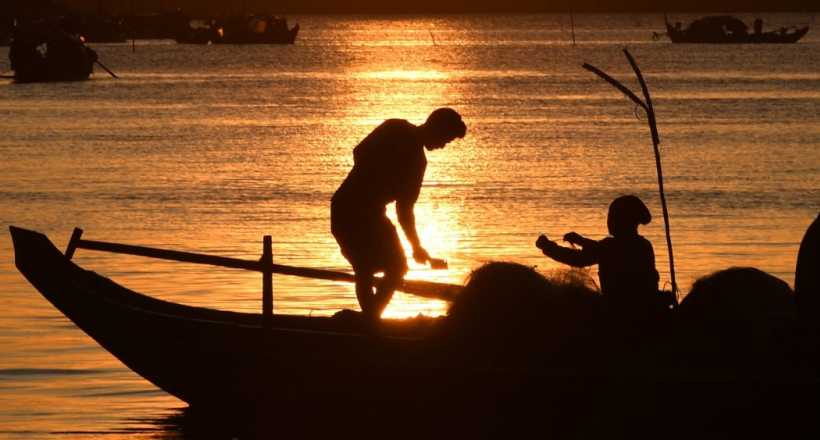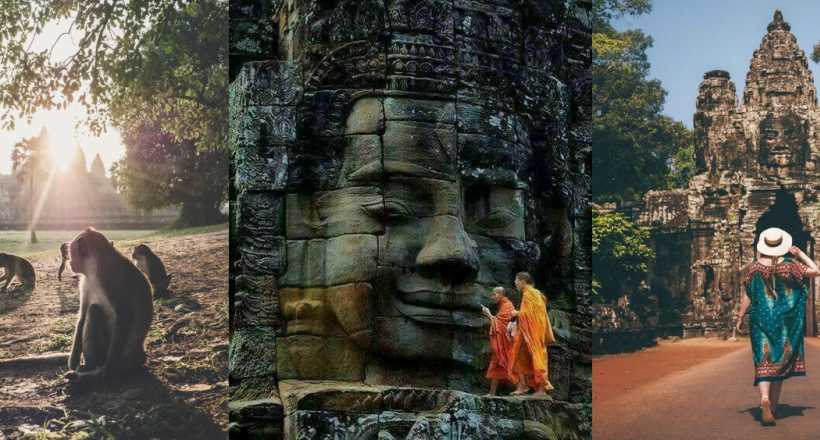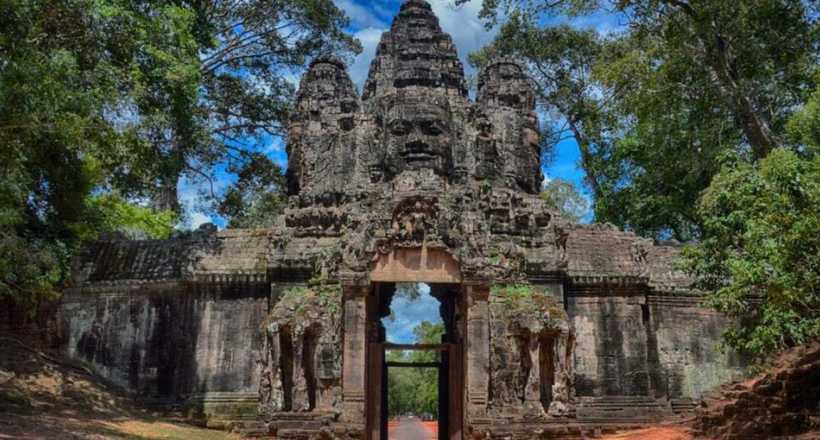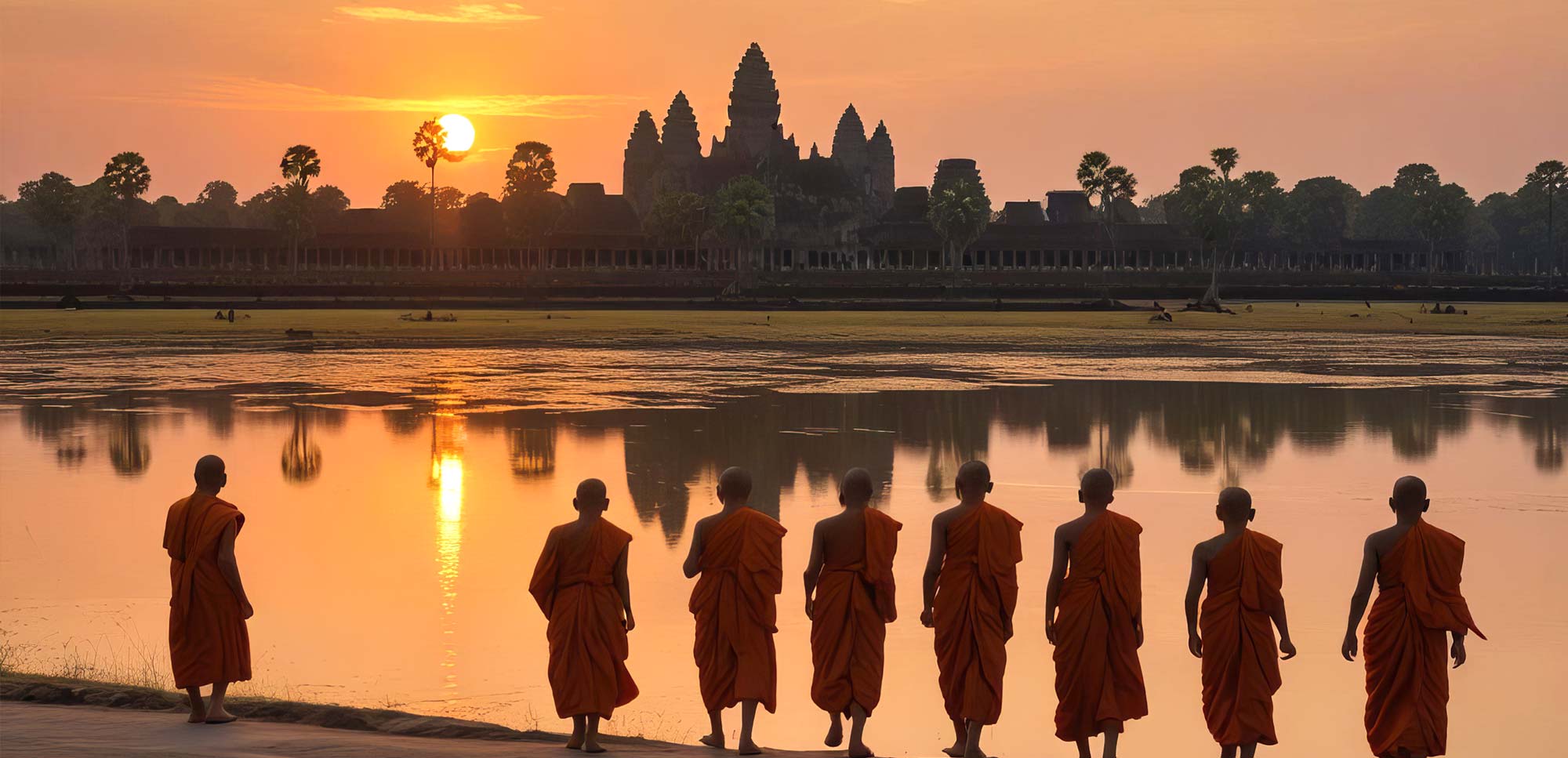
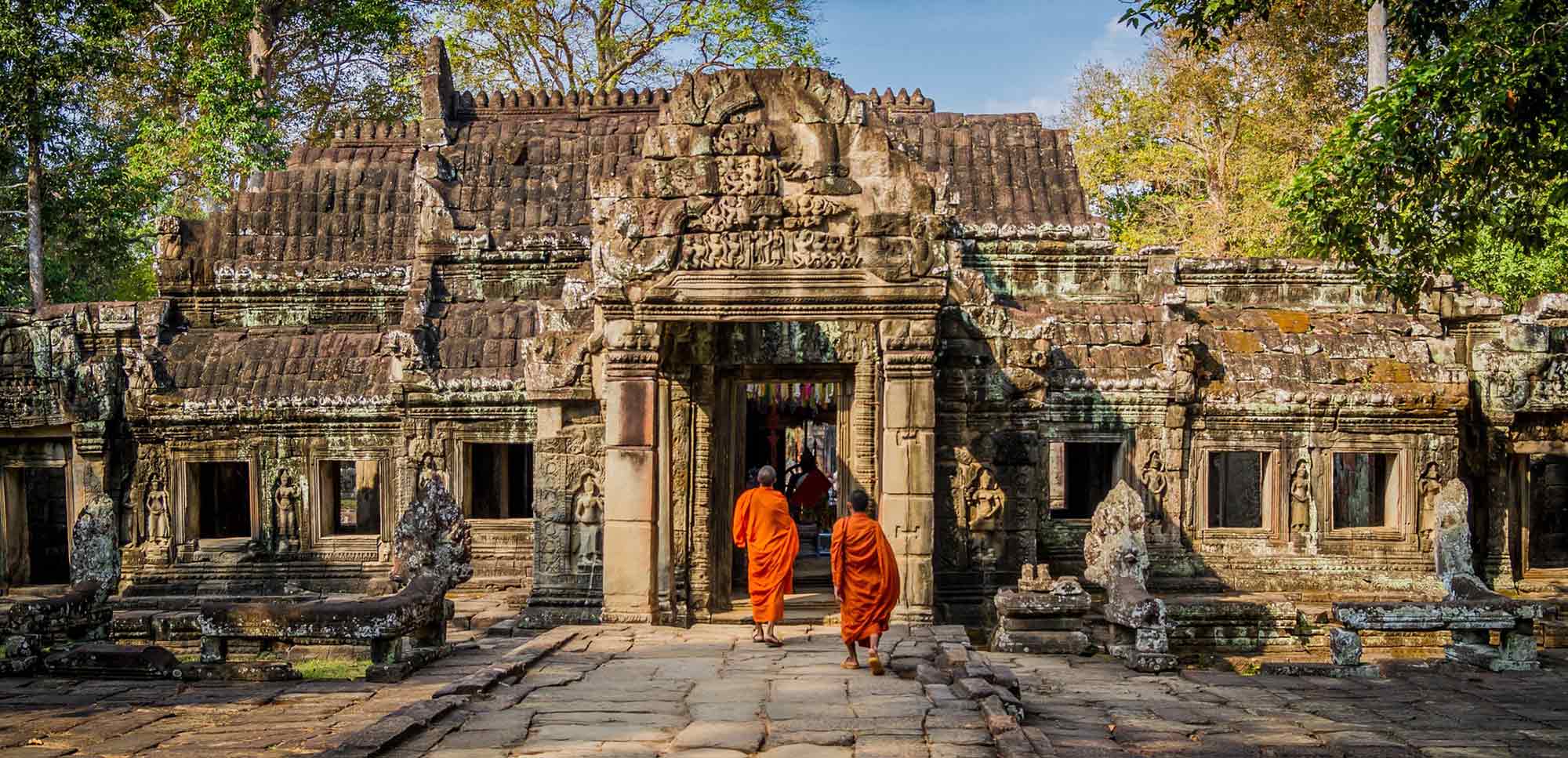
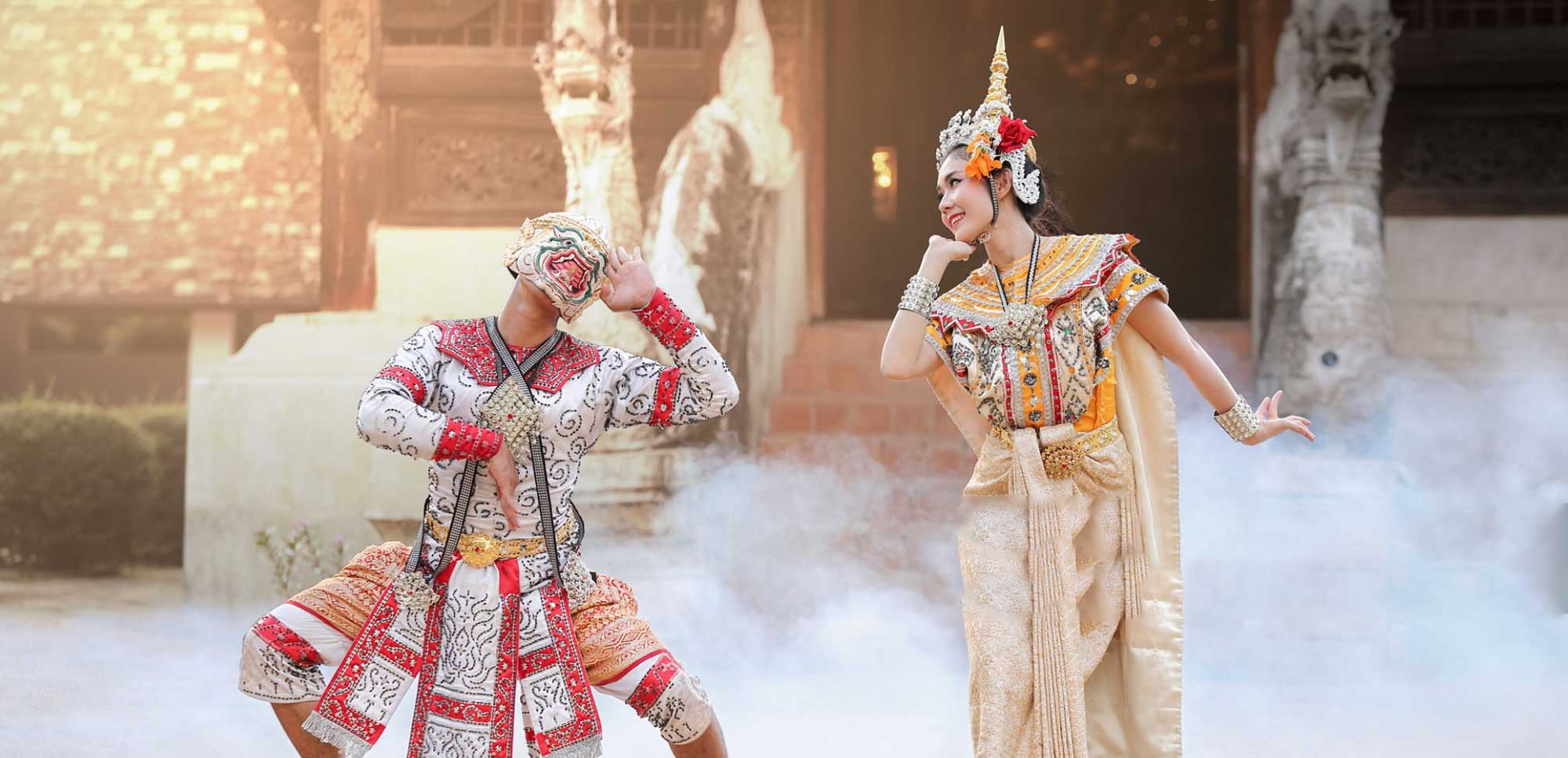
Cambodia
Mysteries of Angkor


CREATE YOUR OWN TRIP WITH US
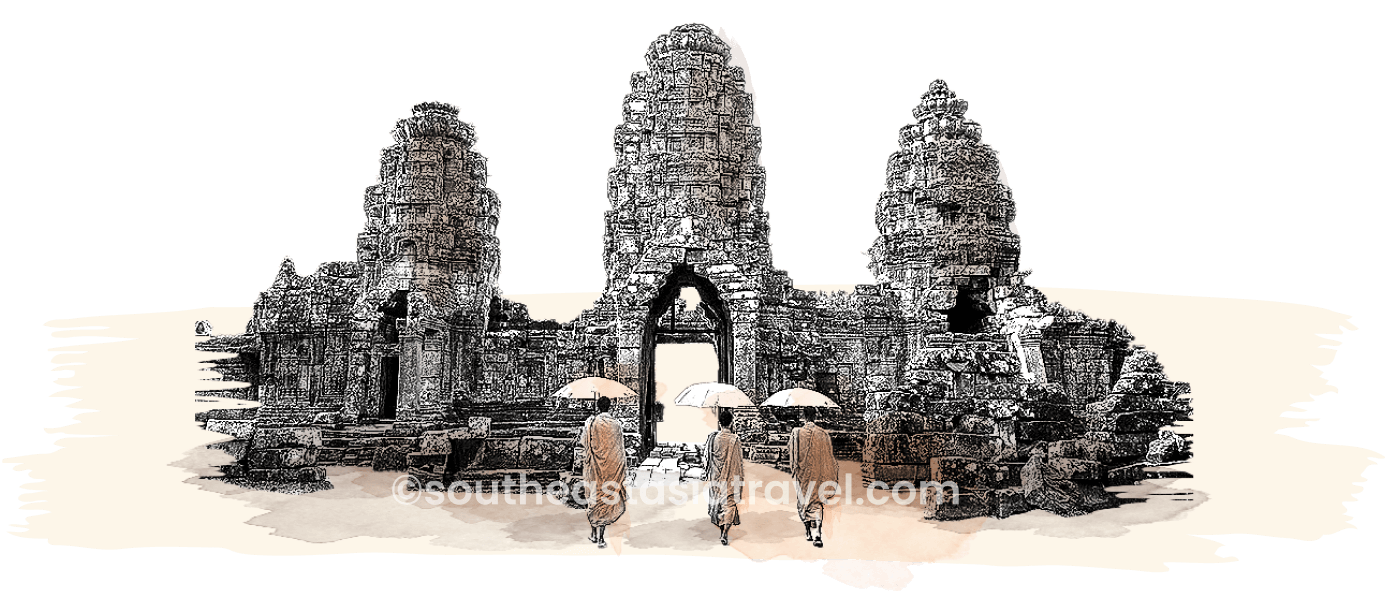
Highlights of Cambodia Tours
While the Angkor Archaeological Park is Cambodia’s standout symbol and sight, this country still has much to see and do besides visiting the remarkable ruins. Once known as the "Paris of the East," Phnom Penh is now the capital of the country, with stunning colonial heritage, bustling markets, and a great selection of restaurants serving traditional and contemporary delicacies. Apart from the absolutely stunning Royal Palace and Silver Pagoda, the Tuol Sleng Genocide Museum and the Killing Fields are the sites that provide visitors with a sobering reminder of Cambodia's tragic past under the Khmer Rouge regime. For a more immersive experience, one can explore the city's markets, sample traditional Khmer cuisine, and take a sunset cruise along the Mekong River.
Beyond the temples and cities, Cambodia offers a wealth of natural beauty and authentic rural life. One can cruise along the tranquil waters of Tonle Sap Lake, Southeast Asia's largest freshwater lake, where floating villages and an abundance of bird species await. Visit the lush Cardamom Mountains, a haven for wildlife enthusiasts and eco-adventurers with opportunities for trekking, birdwatching, and immersing in the untouched beauty of the rainforest. Or depart for some remote countryside towns such as Battambang, Kratie, and Kep to explore their colonial architecture, laid-back atmosphere, and local hospitality.
For beach lovers, Cambodia’s coastline is a hidden gem. The pristine beaches of Koh Rong and its neighboring islands are perfect for sunbathing, snorkeling, scuba diving, or simply unwinding amidst the tropical landscapes.
Read more ...
Cambodia RECOMMENDED FOR YOU
Beyond Borders: Southeast Asia
Only From $6750 PP
All Inclusive ServiceThis Tour
Beyond Borders: Southeast Asia
Only From $6750 PP
All Inclusive ServiceThis Tour
Southeast Asia Odyssey
Only From $6450 PP
All Inclusive ServiceThis Tour
Southeast Asia Odyssey
Only From $6450 PP
All Inclusive ServiceThis Tour
Vietnam Cambodia Thailand Malaysia Tour Package
Only From $3720 PP
All Inclusive ServiceThis Tour
Vietnam Cambodia Thailand Malaysia Tour Package
Only From $3720 PP
All Inclusive ServiceThis Tour
Cambodia Malaysia Indonesia Vietnam Tour Package
Only From $6150 PP
All Inclusive ServiceThis Tour
Cambodia Malaysia Indonesia Vietnam Tour Package
Only From $6150 PP
All Inclusive ServiceThis Tour
Vietnam Cambodia Thailand Malaysia Indonesia Tour Package
Only From $4650 PP
All Inclusive ServiceThis Tour
Vietnam Cambodia Thailand Malaysia Indonesia Tour Package
Only From $4650 PP
All Inclusive ServiceThis Tour
Vietnam Cambodia Laos Thailand & Malaysia Tour Package
Only From $5580 PP
All Inclusive ServiceThis Tour
Vietnam Cambodia Laos Thailand & Malaysia Tour Package
Only From $5580 PP
All Inclusive ServiceThis Tour
Thailand Vietnam Cambodia Tour Package
Only From $3320 PP
All Inclusive ServiceThis Tour
Thailand Vietnam Cambodia Tour Package
Only From $3320 PP
All Inclusive ServiceThis Tour
Vietnam Cambodia Thailand Tour Package
Only From $3360 PP
All Inclusive ServiceThis Tour
Vietnam Cambodia Thailand Tour Package
Only From $3360 PP
All Inclusive ServiceThis Tour
Cambodia Vietnam Tour Package
Only From $2560 PP
All Inclusive ServiceThis Tour
Cambodia Vietnam Tour Package
Only From $2560 PP
All Inclusive ServiceThis Tour
Vietnam Cambodia Tour Package
Only From $2240 PP
All Inclusive ServiceThis Tour
Vietnam Cambodia Tour Package
Only From $2240 PP
All Inclusive ServiceThis Tour
Mysterious Angkor Temples Tour
Only From $710 PP
All Inclusive ServiceThis Tour
Mysterious Angkor Temples Tour
Only From $710 PP
All Inclusive ServiceThis Tour
Incredible Cambodia Tour
Only From $924 PP
All Inclusive ServiceThis Tour
Incredible Cambodia Tour
Only From $924 PP
All Inclusive ServiceThis Tour




Cambodia
What are Cambodia Tours?
Cambodia, located in Southeast Asia, is a nation celebrated for its rich cultural heritage and historical significance. Known as the heart of the ancient Khmer Empire, it is home to the magnificent Angkor Wat, a symbol of national pride and a UNESCO World Heritage Site. Despite challenges in its recent history, including the Khmer Rouge era, the country has shown remarkable resilience and is steadily developing, with tourism, agriculture, and textiles driving its economy. Today, Cambodia invites visitors to explore its unique blend of tradition and modernity.
Cambodia Tours are specially tailored travel experiences that allow visitors to discover the country’s deep culture, historical landmarks, and natural beauty. These packages generally include day trips to iconic sites like Angkor Wat in Siem Reap, the Royal Palace in Phnom Penh, and the serene countryside dotted with traditional villages. They may also offer activities such as trying authentic Khmer cuisine, cruising the Mekong River, and learning about Cambodia’s complex history. Cambodia Tours can be group travel packages with fixed itineraries and schedules or private travel experiences cut to fit various interests, ranging from cultural immersion and adventure to relaxation and eco-tourism, providing an engaging way to see the nation’s unique charm and vibrant traditions.

Cambodia Private Tours
Cambodia private tours offer a personalized and flexible way to roam the country's captivating attractions at your own pace. Tailored to your interests and preferences, these tours allow you to visit iconic sites like the Angkor Wat, the royal palaces, and tranquil rural landscapes without the constraints of a group schedule. With a dedicated guide and driver, you can enjoy a more intimate experience, with opportunities for off-the-beaten-path discoveries, bespoke itineraries, and deeper cultural interactions. Whether you’re interested in history, cuisine, nature, or spiritual sites, a Cambodia private tour provides the freedom to create your perfect Cambodian journey. This option is ideal for families, couples, or small groups seeking a more exclusive and in-depth travel experience.
Advantages of Cambodia Private Tours:
Personalized Itinerary: Cambodia private tours offer the flexibility to tailor your trip according to your interests, whether you're passionate about history, nature, cuisine, or photography. You can choose the pace and focus on the attractions that matter most to you, making your trip uniquely your own.
Flexibility in Scheduling: With a private tour, you are in control of your schedule. You can decide when to start your day, how long to spend at each location, and whether you want to explore more off-the-beaten-path destinations. This makes private tours ideal for travelers seeking a custom experience.
More Comfort and Privacy: Cambodia private tours provide a higher level of comfort, with exclusive access to your own guide, driver, and vehicle. This often results in a more relaxed atmosphere, with no need to deal with the larger crowds typical of group tours.
In-Depth Experiences: With a dedicated guide, private tours allow for deeper interactions and more detailed insights into the history, culture, and significance of various sites. You can ask more specific questions and enjoy a more immersive experience in places like local villages or temples.
No Crowds: Traveling privately allows you to avoid the crowds of larger groups, ensuring a more peaceful, personalized experience, especially at popular sites like Angkor Wat. This is particularly valuable for those who want to enjoy a quieter, more contemplative experience.
Disadvantages of Cambodia Private Tours:
Higher Cost: One of the main drawbacks of Cambodia private tours is the cost. Since you're paying for exclusive services, such as a private guide and transportation, private tours tend to be significantly more expensive than group tours, which can be a consideration for budget-conscious travelers.
More Responsibility: While private tours are flexible, they also require more decisions from you. You'll need to communicate your preferences and choose activities. This might be overwhelming for those who prefer the simplicity of a set itinerary.
Cambodia Group Tours
Cambodia group tours offer a fantastic way to explore the country’s engaging cultural heritage, stunning landscapes, and historical spots in the company of like-minded travelers. These tours provide opportunities to marvel at the ancient temples of Angkor Wat in Siem Reap and Phnom Penh’s poignant historical sites. Beyond the cities, Cambodia group tours may take you to rural areas, where you can experience traditional Khmer culture, visit remote temples, or enjoy the natural beauty of the countryside. With the guidance of experienced tour leaders, group tours offer convenience, camaraderie, and often include local insights, making them an excellent choice for those seeking a deeper understanding of Cambodia's history and culture.
Advantages of Cambodia Group Tours:
Cost-Effective: Group tours are frequently less expensive because the expense is divided by numerous passengers. This can be especially useful for individuals on a tight budget, as the fee usually includes transportation, lodging, and some meals.
Social Experience: Group tours provide excellent opportunities to meet new people from all over the world while visiting Cambodia, making them perfect for single travelers or those who prefer socializing.
Well-Planned Itinerary: Group tours usually come with a carefully structured itinerary that ensures all the major sights and experiences are covered. This can be helpful for first-time visitors who want to see the best of Cambodia without worrying about logistics.
Experienced Guides: Professional tour guides lead group tours, offering in-depth knowledge about the history, culture, and significance of the places visited. This can enhance the overall experience and provide valuable insights that you might miss if exploring on your own.
Less Planning Involved: Since the tour operator handles all the logistics, you can enjoy a hassle-free experience. All transportation, meals, and accommodation are arranged for you, which allows you to focus solely on the experience rather than the details.
Disadvantages of Cambodia Group Tours:
Lack of Flexibility: One of the biggest drawbacks of group tours is the fixed itinerary. If there are specific sites or activities you'd like to focus on, you may be limited by the group’s schedule and predefined path.
Pace May Not Suit Everyone: Group tours often cater to a variety of ages and fitness levels, meaning that the pace may be slower or faster than you’d prefer. You may have to wait for other travelers or be rushed through certain locations.
Limited Personalization: While group tours offer a great introduction to Cambodia, they are less likely to include off-the-beaten-path experiences or cater to your personal interests, such as specialized cultural tours or unique local encounters.
Crowded Settings: In popular tourist destinations like Angkor Wat, group tours can contribute to crowded experiences. Traveling in larger groups might mean more time spent waiting and less space to appreciate the sights.

Why choose Cambodia Tours?
Cambodia is Home to the Majestic Angkor Wat.
No trip to Cambodia is complete without visiting Angkor Wat, the largest religious monument in the world and a UNESCO World Heritage site. This awe-inspiring temple complex, originally built as a Hindu temple in the 12th century before transitioning to Buddhism, is a testament to the ingenuity and artistry of the Khmer Empire. Witness the sunrise over Angkor Wat’s iconic silhouette—a spiritual and photographic moment cherished by travelers worldwide.
Rich Cultural Heritage
Cambodia’s history is as rich as it is diverse, with influences from ancient Khmer civilization, Hinduism, Buddhism, and French colonialism. Explore the cultural hub of Phnom Penh, where you’ll find the Royal Palace, Silver Pagoda, and the sobering Tuol Sleng Genocide Museum, which pays tribute to Cambodia’s resilience following the Khmer Rouge’s reign.
Cambodia Has Unspoiled Nature.
Cambodia boasts lush jungles, tranquil rivers, and striking landscapes. Nature lovers can explore the Cardamom Mountains, the floating villages on Tonle Sap Lake, or the ecotourism hubs of Mondulkiri and Ratanakiri, where you can trek through forests, visit waterfalls, and encounter unique wildlife like elephants and gibbons. If you’re looking for paradise-like beaches, Cambodia’s southern coast delivers. Sihanoukville and nearby islands such as Koh Rong and Koh Rong Samloem feature white sand beaches, turquoise waters, and a relaxed vibe perfect for unwinding.
Affordable Travel
Cambodia is one of the most budget-friendly destinations in the world. From inexpensive accommodation to affordable yet delicious street food, you can enjoy a rich travel experience without breaking the bank. Whether you’re a backpacker or a luxury traveler, Cambodia offers something for everyone.
Cambodians are Warm and Hospitable.
Cambodians are known for their warmth, resilience, and hospitality. Despite a turbulent history, the locals welcome visitors with open arms and genuine smiles. Engaging with Cambodians, whether through homestays or local tours, will leave you with a deep appreciation for their culture and kindness.
Unique Culinary Essence
Cambodia’s cuisine is a delightful mix of flavors and textures, heavily influenced by its neighbors yet distinct in its identity. Sample amok trey (fish curry steamed in banana leaves), nom banh chok (Khmer noodles), or fried tarantulas if you’re feeling adventurous. For street food enthusiasts, the markets in Siem Reap and Phnom Penh are a gastronomic playground.
Best time to take Cambodia Tours
The best time to visit Cambodia depends on the experience you’re seeking. For most travelers, the dry season between November and March offers the best experience. However, the rainy season’s lush scenery and fewer crowds also have their charm. Whether you prefer sunny days or verdant landscapes, Cambodia’s unique beauty shines year-round, making it a destination worth visiting no matter the season.
The Ideal Season: November to March
The peak travel season in Cambodia is from November to March, when the weather is cool and dry. During this time, temperatures range from 24°C to 30°C (75°F to 86°F), making it perfect for exploring renowned Angkor Wat, strolling through Phnom Penh, or relaxing on the beaches of Sihanoukville and Koh Rong. The clear skies and comfortable temperatures attract travelers from around the world, so expect popular destinations to be busier.
The Green Season: May to October
From May to October, Cambodia experiences its rainy season, also known as the “green season.” While rain showers are frequent, they are typically short and occur in the late afternoon, leaving mornings ideal for sightseeing. The countryside is at its most lush and vibrant, and attractions like Tonle Sap Lake are at their fullest, offering astonishing views. Fewer tourists during this time mean quieter temples and lower prices on accommodations and tours.
Shoulder Months: April and November
The months of April and November serve as transitional periods. April is the hottest month, with temperatures reaching up to 40°C (104°F), making it ideal for beachgoers but challenging for sightseeing. November, on the other hand, marks the end of the rainy season and the start of cooler weather, offering a balance of vivid landscapes and pleasant temperatures.

What you can expect from Cambodia Tours
- Discover the charm of Phnom Penh through its colonial architecture, fascinating culture, and harrowing not-so-distant past at iconic sites of the Royal Palace, Silver Pagoda, Tuol Sleng Museum, Choeung Ek Killing Fields…
- Enjoy a personal experience of visiting the "big three" temples of the UNESCO World Heritage Site Angkor complex, including the impressive Angkor Wat, the mysterious Angkor Thom, and the picturesque Ta Prohm.
- Cross the splendor of Tonle Sap Lake to Kampong Phluk village, where you will kayak gently through its incredible stilted houses and flooded forests and learn about the rich culture, lifestyle, and ecosystem of this fascinating place.
- Get on board a local boat from the village of Kampi and cruise out into the mighty Mekong for a great chance to encounter the rare freshwater Irrawaddy Dolphins playing in their natural habitat.
- Discover the stunning colonial architecture of Kampong Cham and take in many intricate architectural features and carvings of Wat Nokor, a magnificent historic temple that dates back to the 11th century.
- Journey to the archaeological site of Sambor Prei Kuk, a UNESCO World Heritage Site famous for hundreds of Pre-Angkor-styled temples, and explore a community-based tourism project set next to the historical site.
- Experience a unique bamboo train ride in Battambang that runs through the peaceful countryside landscape, lush jungle greenery, and local villages where you can observe the daily activities of the indigenous people.
- Set off to explore Cambodia’s finest islands and bays from Sihanoukville, where you can enjoy fishing, snorkeling, swimming, or lying on the white sand beaches of Koh Thas Island and Koh Rong Samloem Island.
- Immerse yourself in the eerie world of the abandoned colonial-era Bokor Hill Station, see the remains and coastal views at your own pace, and enjoy a refreshing break near Popokvil Waterfalls.
- Venture to the lesser-known islands around Kep, where you can enjoy a day of sunbathing on the untouched beaches, discover the fragile marine ecosystem by snorkeling, and experience the laid-back vibe of a remote island waiting to be explored.
- Let yourself be enchanted by Koh Rong, a tropical island paradise of picturesque scenery, glistening white sandy beaches, crystal-clear turquoise waters, and a tranquil vibe, far away from the hustle and bustle of city life.
- Journey through rugged jungles up to the towering hilltop in the Dangrek Mountains to gaze in awe at intricate carvings of the 1000-year-old Preah Vihear temple ruins, which is also a UNESCO World Heritage Site of remarkable ancient architecture.
- Take a break from city life and wander off into the beautiful, idyllic paradise of Kirirom National Park, the first established in Cambodia, with thrilling forest explorations and visits to majestic waterfalls.
Most Popular Destinations on Cambodia Tours
Siem Reap
Undoubtedly, Siem Reap is at the top of the must-visited list in Cambodia. Nevertheless, this charming town has emerged as a world-class destination in its own right thanks to a superb selection of restaurants, cafes, and bars. Beyond the town center lie the floating villages on Tonlé Sap Lake, adventure activities such as quad biking and ziplining, and cultural pursuits such as cooking classes and martial arts courses.
Phnom Penh
Previously recognized as the Pearl of Asia, Phnom Penh is one of the most beautiful French-style cities in the Indochina Peninsula. Today the city is home to shops, restaurants, high-quality services, river cruises, and tall buildings, as well as many cultural and historical sites important in the city’s culture and history.
Battambang
Established as a trading center in the 18th century, Battambang lures visitors with many iconic attractions, including the famous bamboo train and Bat Cave. The town has many Angkor-style temples and Buddhist shrines that can be explored on foot or by bicycle. Battambang is also the home of the inspiring Phare Ponleu Selpak, a renowned art NGO that trains performing artists and hosts inspirational performance art shows combining circus skills with theatre and storytelling.
Kratie
Kratie is a small town on the banks of the Mekong River, famous for the Mekong River dolphins and stunning sunsets. From here take the ferry to Koh Trong Island, a relaxing place to experience authentic Khmer hospitality at a local homestay and explore by bicycle.
Kep
Kep was founded as a colonial retreat for the French elite in 1908, and the town is still full of ruined shells of old villas, destroyed in the days of the Khmer Rouge. Nowadays, it offers a variety of beach activities. Rabbit Island, off the Kep coast, is popular for its beaches. This rustic island, where electricity is only provided for a few hours in the evening, tends to be visited on day trips.
Kampot
As one of the most beautiful towns in Cambodia, Kampot draws visitors with its old-world ambience. And, it is also known as the land of black peppercorns. Due to their unique flavor, the peppercorns are much loved by chefs from around the world. In addition, explore Phnom Chhngok Cave, kayak down the river, or drive up Bokor Mountain to see an abandoned French colonial Bokor hill station and a giant Buddha statue.
Prasat Preah Vihear
Located atop the Dangrek Mountains and overlooking the Cambodian floodplains, the Preah Vihear Temple is an ancient Hindu temple built during the Khmer Empire. It is close to the border with Thailand and has been a center of tension between the two countries. It was listed as a UNESCO World Heritage Site in 2008.
Sihanoukville
Named after former king Norodom Sihanouk, Sihanoukville is the most popular Cambodian beach destination on the Gulf of Thailand. While the beaches may not be in the same paradise league as some of their Southeast Asian counterparts’, this is still one of the best places to visit, and it is also the main entry point to the offshore islands of Koh Rong and Koh Rong Samloem, which are ideal for snorkeling and for a relaxing beach vacation.
Mondulkiri
Mondulkiri is a province in eastern Cambodia famous for its natural beauty and wildlife with lush forests, rolling hills, waterfalls, and rivers. It is also home to many ethnic minorities, such as the Bunong and the Phnong. Mondulkiri is a great place to visit if you love nature and adventure, such as trekking, camping, or wildlife watching.
Ratanakiri
Ratanakiri, a province in Cambodia’s northeast, is an ideal destination for outdoor lovers. This province is famed for its natural beauty, with Virachey National Park to the north, Lumphat Wildlife Sanctuary to the south, well-known Yeak Laom Lake, and Kachanh waterfalls, making it perfect for outdoor activities. Although Ratanakiri Province has few towns, most of the local population lives in villages where they farm the land and maintain a traditional way of life.

Cambodia Tours by Styles
Cambodia Tours by Styles refers to curated travel packages in Cambodia designed to suit different interests, preferences, and travel styles. These tours may focus on themes such as cultural exploration, adventure, eco-tourism, family trips, or culinary experiences, allowing travelers to enjoy personalized and unique itineraries tailored to their specific interests.
Best-selling Cambodia Tours
Best-selling Cambodia Tours are the most popular and frequently booked travel packages in Cambodia, handpicked by our Inside Travel expert team for their good value, well-made itineraries, and memorable experiences. These tours often highlight iconic attractions like Angkor Wat, cultural heritage sites, vibrant cities, and scenic landscapes, making them top choices for travelers seeking the best of Cambodia.
Heritage & Culture Cambodia Tours
Heritage & Culture Cambodia Tours are travel packages focused on exploring Cambodia's rich history, traditions, and cultural landmarks. These tours typically include visits to ancient temples like Angkor Wat, UNESCO World Heritage Sites, traditional villages, museums, and cultural performances, offering travelers an in-depth understanding of Cambodia's vibrant heritage and enduring legacy.
Cambodia Nature & Wildlife Tours
Cambodia Nature & Wildlife Tours are tour packages designed to showcase the country's natural beauty and diverse ecosystems. These tours often cover guided excursions in national parks, wildlife sanctuaries, pristine beaches, and lush forests, offering opportunities to uncover Cambodia's flora and fauna. Activities may include trekking, birdwatching, river cruises, and eco-friendly adventures, providing an immersive experience in the country's natural landscapes.
Adventure & Outdoor Cambodia Tours
Adventure & Outdoor Cambodia Tours are dynamic travel packages meant for thrill-seekers and nature enthusiasts, offering active experiences in Cambodia's diverse landscapes. These tours offer activities such as trekking, cycling, kayaking, zip-lining, and exploring off-the-beaten-path destinations. They provide travelers with chances to engage in outdoor adventures while admiring Cambodia's natural beauty and cultural heritage.
Beach & Island Cambodia Tours
Beach & Island Cambodia Tours are travel itineraries focused on exploring Cambodia's charming coastal areas and idyllic islands. These tours commonly feature relaxing stays at tropical beaches, visits to islands like Koh Rong and Koh Rong Samloem, and activities such as snorkeling, diving, and boat trips. They are ideal for travelers seeking a mix of leisure, natural beauty, and seaside adventure.
Cambodia Family Tours
Cambodia Family Tours are travel packages specially designed for families, offering a mix of cultural, educational, and fun activities suitable for all ages. They offer guided tours to symbolic landmarks like Angkor Wat, interactive cultural experiences, outdoor adventures, and family-friendly accommodations. They aim to create memorable and enriching experiences for families while venturing to the beauty and heritage of Cambodia together.
Honeymoon Cambodia Tours
Honeymoon Cambodia Tours are romantic travel itineraries tailored for newlyweds, offering intimate and unforgettable experiences in Cambodia's most enchanting destinations. These tours feature visits to famous places of interest, secluded beaches, luxury accommodations, and personalized activities. They provide a perfect blend of romance, relaxation, and adventure for couples celebrating their new journey together.
Where to Stay on Cambodia Tours
When traveling on a Cambodia tour, there are a variety of accommodation options to suit different preferences and budgets. Whether you prefer luxury beachfront resorts in Sihanoukville, traditional Khmer-style boutique hotels in Phnom Penh, or a more rustic experience in Siem Reap, Cambodia offers plenty of options to enhance your journey.
Siem Reap
3-star Amber Angkor Villa - 603, Street Wat Bo, Siem Reap
4-star Somadevi Angkor Resort & Spa - 9V64+268, Sivatha Blvd, Mondol II, Svay Dangkum, Siem Reap
5-star Borei Angkor Resort & Spa - No. 0369, National Road 6, Banteay Chas, Siem Reap
Phnom Penh
3-star Okay Boutique Hotel - 174, Street 19z, Daun Penh, Phnom Penh
4-star Anik Palace Hotel - No. 14, Street 278 Sangkat Boeung Keng Kang I, Phnom Penh
5-star Rosewood Phnom Penh - Level 8th, Unit 1-2-3, Vattanac Capital Tower, 66 Monivong Boulevard, Daun Penh, Phnom Penh
Sihanoukville
3-star Eden Beach Resort - Koh Rong Samloem, Preah Sihanouk
4-star Ren Resort - At the end of Otres 2, Marina Road, Preah Sihanouk
5-star Won Majestic Hotel Cambodia - Phum 4, Sangkat 4, 2 Thnou St Krong Preah Sihanouk
Battambang
3-star Bambu Battambang Hotel - Phum Romchek 5, Sangkat Rottanak KO Street, Battambang
3-star Battambang Resort - Wat Ko Village, Battambang
4-star Maisons Wat Kor Boutique - 221, Street 800, Wat Kor Village, Sangkat, Battambang
Kampot
3-star Kampot Sweet Boutique - Trapeang Thum, Tek Chhou, Kampot
3-star Rikitikitavi Hotel - Riverside Road (Corner of Street 735 and Street 728), Krong Kampot
Kep
4-star Veranda Natural Resort - Kep Hillside Road, Kep
Kratie
Sorya Guesthouse - North end of Riverside Road, between Street 1 & 2, Kratie
3-star Soriyabori Villas Resort - Phum Kbal Koh, Sangkat Koh Trong, Kratie

Must-try Food on Cambodia Tours
Amok Trey
Amok Trey is a traditional Cambodian dish that features fish cooked in a rich, aromatic curry. The name "Amok" refers to the cooking technique, where ingredients are steamed or simmered in a fragrant mixture, while "Trey" means fish in Khmer. The dish is typically made with freshwater fish, such as catfish or tilapia, which is marinated in a flavorful blend of coconut milk, lemongrass, turmeric, garlic, kaffir lime leaves, and other spices. The fish mixture is often placed in a banana leaf cup and steamed to perfection, resulting in a smooth, creamy texture with a slightly tangy, fragrant taste. Amok Trey is often served as a part of a larger feast, offering a balance of rich, savory, and aromatic flavors that are a hallmark of Cambodian cuisine. It is considered one of the country's most iconic and beloved dishes, often enjoyed during special occasions and celebrations.
Nom Banh Chok
Nom Banh Chok is a beloved Cambodian dish often enjoyed for breakfast, offering a fresh and vibrant combination of flavors. It consists of rice noodles topped with a fragrant green curry sauce made from lemongrass, turmeric, and kaffir lime, giving the dish a bright and aromatic profile. The sauce typically includes fish, usually freshwater varieties like snakehead or catfish, which is blended into the curry base. The dish is garnished with a variety of fresh herbs and vegetables, such as cucumber, bean sprouts, banana flowers, and mint, creating a refreshing contrast to the rich curry. Nom Banh Chok is often served with a side of lime wedges and chili, allowing diners to adjust the taste to their liking.
Samlor Machu Trey
Samlor Machu Trey is a traditional Cambodian sour fish soup, known for its vibrant and tangy flavors. The dish features freshwater fish, such as catfish or tilapia, simmered in a broth made with tamarind, lime, and sometimes pineapple, creating a refreshing sourness. The soup is enriched with aromatic herbs like lemongrass, garlic, and galangal, and often includes vegetables like tomatoes, eggplant, and water spinach. Samlor Machu Trey is regularly served with rice and is enjoyed for its perfect balance of sour, savory, and slightly sweet flavors, making it a popular comfort food in Cambodian cuisine.
Fried Insects
Fried insects are a popular snack in Cambodia, offering a unique and crunchy delicacy that is deeply rooted in the country's culinary culture. Vendors often sell various types of insects, such as crickets, grasshoppers, and fried tarantulas, which are seasoned and deep-fried to a crisp texture. These insects are enjoyed for their rich, savory flavor and are frequently served with chili, lime, and salt for added taste. Fried insects are not only a source of protein but also a traditional food, commonly found at street markets and enjoyed by both locals and adventurous tourists seeking to experience authentic Cambodian street food.
Kuy Teav
Kuy Teav is a well-liked Cambodian dish consisting of rice noodles, often served in a savory broth. The noodles, made from rice flour, are accompanied by a light, clear soup made from chicken, pork, or beef and flavored with herbs and spices like garlic, lemongrass, and scallions. It is commonly topped with fresh garnishes such as lime, cilantro, and fried shallots. Kuy Teav can be eaten as a breakfast dish or enjoyed at any time of day, and it is often served with a side of chili and fish sauce, allowing for customization of flavors.
Lok Lak
Lok Lak is a Cambodian stir-fried beef dish, often served with a flavorful, tangy sauce. The beef is typically marinated in a mixture of soy sauce, garlic, and lime juice before being quickly stir-fried to a tender and savory perfection. It is traditionally served with a side of rice, a fried egg, and a fresh cucumber salad, with the option of dipping the beef in a tangy, peppery lime sauce made with Kampot pepper, a regional specialty.
Local Festivals and Events for Cambodia Tours
Chol Chnam Thmay - Khmer New Year
Chol Chnam Thmay is the Cambodian New Year, a vibrant and joyous celebration that marks the arrival of the traditional Khmer New Year, usually celebrated from April 13 to 15. The holiday is a time for families to come together, honor their ancestors, and welcome the new year with hopes for prosperity, health, and happiness. The celebrations are rooted in ancient customs and involve a blend of religious, cultural, and social activities.
One of the most significant aspects of Chol Chnam Thmay is the Pagoda Visit, where Cambodians visit local temples to make offerings to monks and pray for blessings. This is often followed by the Buddhist ritual of washing statues to symbolize purification for the year ahead. Traditional games and activities, such as bos angkunh (a game involving small stones) and chol chhoung (a throwing game), are commonly enjoyed, especially by teens and young adults.
Family gatherings are a key part of the festivities, with many people returning to their hometowns to spend time with loved ones. The preparation of special foods, like nom ansom (sticky rice cakes wrapped in banana leaves) and sweet treats, adds to the celebratory atmosphere. The pouring of water on each other's hands, a sign of respect and good wishes for the coming year, is also a common tradition during Chol Chnam Thmay.
The New Year celebration is not only a time for joy and reunion but also an occasion to reflect on the past year and seek spiritual renewal, making Chol Chnam Thmay a deeply meaningful and cherished holiday in Cambodian culture.
Royal Ploughing Ceremony
The Cambodian Royal Ploughing Ceremony is an ancient and significant agricultural event that marks the beginning of the planting season in Cambodia. Traditionally held in May, the ceremony is presided over by the King or a representative from the royal family, symbolizing the connection between the monarchy, agriculture, and the prosperity of the nation. The ceremony takes place at the Royal Palace in Phnom Penh and is attended by high-ranking government officials, monks, and the public.
During the event, a pair of oxen is ceremonially guided to plow a field, symbolizing the start of the rice planting season. The oxen are dressed in ceremonial garb and are led by royal representatives who conduct rituals to bless the land. After the plowing, the oxen are offered a variety of foods, such as rice, beans, and water, and the choices they make are believed to predict the upcoming year's harvest. For example, if the oxen choose rice, it indicates an abundant crop, while other choices might signal different outcomes for the agricultural season.
The ceremony also includes prayers and blessings from Buddhist monks for a successful harvest, ensuring a prosperous year for the country. The Royal Ploughing Ceremony is a time-honored tradition that connects the Cambodian people to their agricultural heritage and their respect for the cycles of nature. It is a public holiday, celebrated with festivities and offerings, reminding the nation of the importance of agriculture in Cambodia's history and economy.
Pchum Ben - Ancestors’ Day
Pchum Ben is a significant religious and cultural festival in Cambodia, dedicated to honoring and paying respects to deceased ancestors and loved ones. Celebrated over 15 days, usually in September or October, Pchum Ben culminates on the 15th day of the 10th lunar month. The festival is based on Buddhist beliefs, particularly the notion that the spirits of the deceased return to the world during this time to receive offerings of food and prayers from their living relatives.
During Pchum Ben, Cambodians visit local pagodas to make offerings of rice, fruit, and other food items to the monks, who then perform prayers and chants for the departed. These offerings are believed to help alleviate the suffering of spirits in the afterlife and ensure they are reborn in a better state. Many people also take the opportunity to visit family tombs, cleaning and decorating them in honor of their ancestors.
The festival is a time of reflection, reverence, and spiritual renewal. Families come together, often traveling to their ancestral hometowns to celebrate and remember the dead. Traditional foods like num ansom (sticky rice cakes) and prahok (fermented fish paste) are prepared and shared among families. Pchum Ben is an important occasion that reinforces the values of family, respect for ancestors, and the interconnectedness of life and death in Cambodian culture.
Meak Bochea - Festival of the Monks
Meak Bochea is an important Buddhist holiday in Cambodia, commemorating a key event in the life of the Buddha. The holiday, observed on the full moon day of the third lunar month, typically falls in February or March. Meak Bochea marks the day when 1,250 of the Buddha's disciples, all of whom were enlightened and had not been summoned, spontaneously gathered at the Buddha's request in the Veluvana Monastery. During this gathering, the Buddha delivered a sermon that outlined the fundamental principles of Buddhist practice, including the core teachings of morality, meditation, and wisdom.
On Meak Bochea, Cambodian Buddhists gather at pagodas to participate in prayers, meditation, and rituals. Devotees offer food and donations to the monks, listen to sermons, and engage in acts of merit-making to accumulate good karma. It is also a time for reflection and the practice of the Buddha’s teachings, particularly the emphasis on the importance of harmony, moral conduct, and spiritual cultivation.
This day holds deep spiritual significance for the Cambodian people, providing an opportunity for renewal of faith and strengthening of the Buddhist community. Meak Bochea is a public holiday and a peaceful occasion for Cambodian Buddhists to express their devotion and reaffirm their commitment to the path of enlightenment.

Cambodia Tours by Durations - Iconic Schedules
Cambodia Tours by Durations refers to travel packages in Cambodia that are organized based on the length of the tour, offering flexible options for different timeframes. These tours range from short trips (such as 3-5 days), ideal for those with limited time, to longer itineraries (7-14 days or more) that allow for a more in-depth exploration of the country's cultural, historical, and natural attractions. Travelers can choose tours that fit their schedule and desired pace of travel.
Cambodia Tours 6-10 Days
Cambodia Tours 6-10 Days are tour schedules designed for travelers who wish to explore Cambodia in more depth over a moderate period of time, typically ranging from six to ten days. These tours allow for a balanced itinerary, covering key cultural, historical, and natural attractions such as Angkor Wat, Phnom Penh, and scenic destinations like Tonle Sap Lake and Sihanoukville. Ideal for those who want to immerse themselves in Cambodia’s heritage and landscapes without feeling rushed.
Cambodia Tours 6-10 Days Examples:
- Incredible Cambodia Tour - 7 Days
- Sublime Insight to Cambodia - 8 Days
- Family Cambodia Tour - 9 Days
- Cambodia Adventure from North to South - 10 Days
- Best of Cambodia - 10 Days
Cambodia Tours 11-16 Days
Cambodia Tours 11-16 Days are extended travel packages designed for travelers who want to experience a more comprehensive exploration of Cambodia over a longer period, typically ranging from eleven to sixteen days. These tours offer the opportunity to visit a wider range of destinations, including major cultural landmarks, as well as off-the-beaten-path locations, natural wonders, and rural areas. They provide a deeper immersion into Cambodia's history, culture, and landscapes, making them ideal for those seeking a thorough and relaxed travel experience.
Cambodia Tours 11-16 Days Examples:
- Family Vacation in Cambodia - 11 Days
- Cambodia Authentic Tour - 12 Days
- Cambodia Grand Tour - 14 Days
- Cambodia sightseeing & beach holidays - 15 Days
Cambodia Tours 16+ Days
Cambodia Tours 16+ Days are extensive travel packages designed for those seeking a thorough and immersive journey through Cambodia over a longer duration, typically ranging from sixteen to twenty days or more. These long tour itineraries also feature visits to other countries in Southeast Asia, such as Vietnam, Thailand, Laos, or Myanmar. With a mix of popular spots like Angkor Wat, the Mekong River, and ancient temples, as well as off-the-beaten-path destinations, these itineraries provide a deeper, cross-cultural experience of Southeast Asia, ideal for those seeking an attractive and enlightening journey across the region.
Cambodia Tours 16+ Days Examples:
- Complete Cambodia Tour - 18 Days
- The Senses of Cambodia - 19 Days
- Thailand Vietnam Cambodia Tour Package - 20 Days
- Best of Cambodia, Malaysia, and Indonesia - 21 Days
How Much for a Cambodia Tour Package?
First-time visitors to Cambodia may wonder how much they should expect to pay for a Cambodia tour package. The answer depends largely on the type of package you choose: economy, deluxe, or luxury. Let’s break down what each option typically offers and the price range you can expect.
Economy Cambodia Tours
Price Range: US$115 - US$130 per day (per person)
For budget-conscious travelers who want to experience Cambodia without breaking the bank, an economy tour package is an excellent choice. These tours generally focus on providing the core highlights of the country at a more affordable price.
Example Tour: A private 5-day tour of Phnom Penh and Siem Reap, with 3-star accommodations, local transportation, and guided tours, might cost around US$600 - US$700 per person.
Deluxe Cambodia Tours
Price Range: US$150 - US$180 per day (per person)
Deluxe Cambodia packages cater to travelers who want a bit more comfort and a higher standard of service without venturing into the ultra-luxury price range. These tours offer a balance between comfort, quality, and value for money.
Example Tour: A private 7-day budget tour of Phnom Penh, Siem Reap, and Battambang, with 4-star accommodations, local transportation, and guided tours, might cost around US$1,000 - US$1,300 per person.
Luxury Cambodia Tours
Price Range: US$190 - US$200+ per day (per person)
For those seeking the ultimate in comfort, luxury Cambodia tour packages are the way to go. These high-end packages provide top-notch services, exclusive experiences, and accommodations that are truly exceptional.
Example Tour: A private 10-day luxury tour of Siem Reap, Phnom Penh, and Sihanoukville that includes stays at 5-star hotels, private transfers, and customized guided tours could range from US$1,900 to US$2,000+ per person depending on the itinerary and specific preferences.
Factors Affecting Cambodia Tour Prices
Season: Prices vary depending on the time of year. High season (November to February) sees increased demand and higher rates, while low season (May to October) offers discounts.
Group Size: Group tours tend to be more affordable, while private tours cost more due to personalized services and private guides.
Itinerary Length: Longer tours naturally cost more. A 10-day tour will generally be priced higher than a 5-day one.
Inclusions: Additional activities, such as cooking classes, boat trips, and cultural performances, can increase the price of a package.

Frequently Asked Questions about Cambodia Tours
Do I need a visa to travel to Cambodia?
Yes, citizens outside ASEAN countries need visas to visit Cambodia. You can get a visa in advance from an Embassy or Consulate or on arrival.
Most nationalities can obtain a visa on arrival at major border gates or international airports in Cambodia. You need to bring along two passport-sized photos, a passport with at least two blank pages and six months of validity from your entry date, and USD 30 in cash.
You can also get an E-visa from here.
Starting July 1, 2024, passengers entering Cambodia via any international airports must submit an e-Arrival Card, which can be completed up to 7 days before arrival. Tablets will be available at airports for those unable to do so beforehand. The new “Cambodia e-arrival card” can be accessed and submitted via the official website, as well as through Apple's App Store and Google Play Store. This platform can also be used to reserve a visa on arrival.
Is Wi-Fi readily available?
Wi-Fi is readily available in Phnom Penh, Siem Reap, and other tourist areas. Most hotels, restaurants, cafes, and shops offer free or affordable Wi-Fi; you should check in advance.
Can I use my cellphone in Cambodia?
Yes, as long as you have global roaming changes with your carrier. A better choice is to buy a local SIM card at any airport terminal or border checkpoint.
Is it safe to drink tap water?
You should avoid drinking tap water in Cambodia. Using filtered water is a better choice. You can also buy bottled water at local stores, street sides, and mini marts.
Is Cambodia family-friendly to travel?
Yes, Cambodia is a safe and friendly destination for families with children. You can customize your trip with experiences and activities that are suitable for kids and other family members.
Can I use US dollars, or do I need local currency?
The official currency in Cambodia is the Riel (KHR), but the US dollar is widely accepted in big cities and tourist sites; ATMs in big cities also give out US dollars.
You should have small Riel notes for daily expenses. If you pay in USD and the amount of change is less than 1 USD, you will get small notes in riel. (1 USD = roughly 4000 Riel)
Can I use credit cards everywhere?
You can use credit and debit cards in major cities and tourist businesses. In smaller cities and the countryside, you should have cash.
ATMs are widely available in Phnom Penh, Siem Reap, Sihanoukville, and Battambang. Outside of these cities, there are no ATMs, so it is recommended that you carry cash (small notes) with you.
Should I arrange travel insurance?
Absolutely! It is recommended to get the proper insurance so that you are protected in the event of a medical emergency, delay, vacation interruption, or loss of valuables and vital documents.
How should I dress in Cambodia?
In general, tourists should dress modestly in Cambodia, especially when visiting historic, religious sites or rural communities. Before entering temples and houses, you should take off shoes and hats.
Should I tip in Cambodia?
Tipping is not mandatory, but it is always appreciated.
Do I need a vaccine to travel to Cambodia?
No vaccination is required to enter Cambodia, but travelers should consult a professional doctor for recommended vaccines before arriving in Cambodia.
Cambodia Destinations
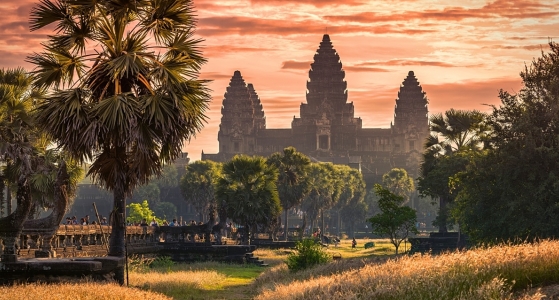
Undoubtedly, Siem Reap is at the top of the must-visited list in Cambodia. Nevertheless, this charming town has emerged as a world-class destination in its own right thanks to a superb selection of restaurants, cafes, and bars. Beyond the town center lie the floating villages on Tonlé Sap Lake, adventure activities such as quad biking and ziplining, and cultural pursuits such as cooking classes and martial arts courses.
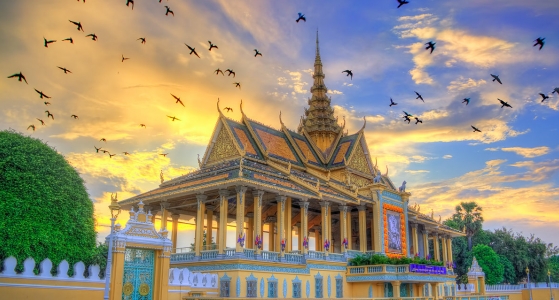
Previously recognized as the Pearl of Asia, Phnom Penh is one of the most beautiful French-style cities on the Indochina Peninsula. Today, the city is home to shops, restaurants, high-quality services, river cruises, and tall buildings, as well as many cultural and historical sites important to the city’s culture and history.
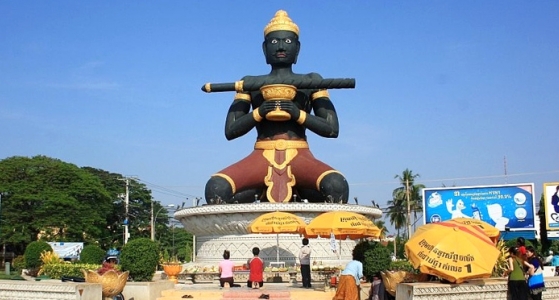
Established as a trading center in the 18th century, Battambang lures visitors with many iconic attractions, including the famous Bat Cave. The town has many Angkor-style temples and Buddhist shrines that can be explored on foot or by bicycle. Battambang is also the home of the inspiring Phare Ponleu Selpak, a renowned arts NGO that trains performing artists and hosts inspirational performance art shows combining circus skills with theater and storytelling.
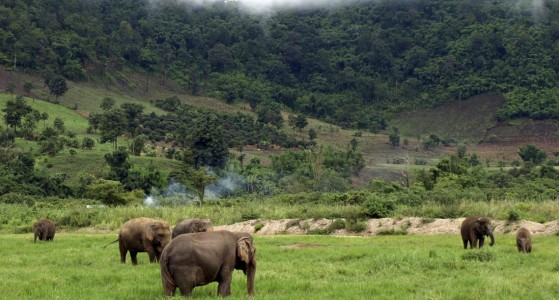
Mondulkiri is a province in eastern Cambodia famous for its natural beauty and wildlife, with lush forests, rolling hills, waterfalls, and rivers. It is also home to many ethnic minorities, such as the Bunong and the Phnong. Mondulkiri is a great place to visit if you love nature and adventure such as trekking, camping, or wildlife watching.
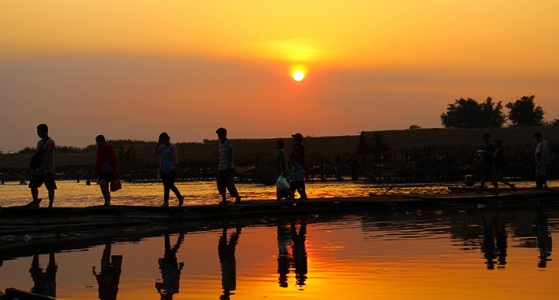
Kratie is a small town on the banks of the Mekong River, famous for the Mekong River dolphins and stunning sunsets. From here, take the ferry to Koh Trong Island, a relaxing place to experience authentic Khmer hospitality at a local homestay and explore by bicycle.
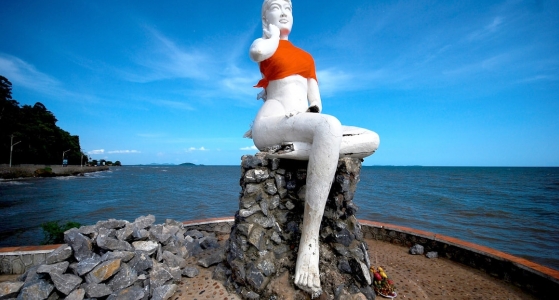
Kep was founded as a colonial retreat for the French elite in 1908, and the town is still full of ruined shells of old villas, destroyed in the days of the Khmer Rouge. Nowadays, it offers a variety of beach activities, such as coral reef snorkeling in the shallow waters. Rabbit Island, off the Kep coast, is popular for its beaches. This rustic island, where electricity is only provided for a few hours in the evening, tends to be visited on day trips.
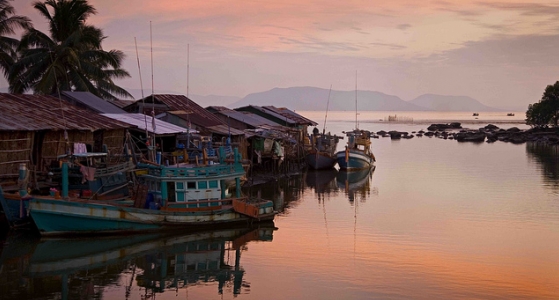
As one of the most beautiful towns in Cambodia, Kampot draws visitors with its old-world ambience. And it is also known as the land of black peppercorns. Due to their unique flavor, peppercorns are much loved by chefs around the world. In addition, explore Phnom Chhngok Cave, kayak down the river, or drive up Bokor Mountain to see an abandoned French colonial Bokor hill station and a giant Buddha statue.
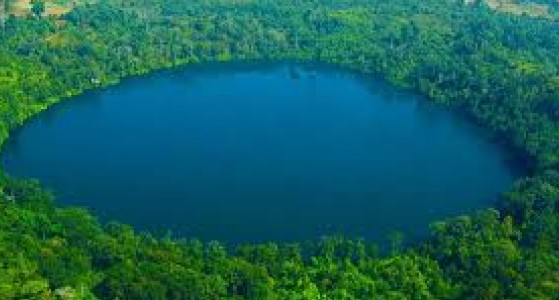
Ratanakiri, a province in Cambodia’s north-east, is an ideal destination for outdoor lovers. This province is famed for its natural beauty, making it the ideal place for outdoor activities. Virachey National Park to the north, Lumphat Wildlife Sanctuary to the south, and the well-known Yeak Laom Lake and Kachanh waterfalls. Although Ratanakiri Province has few towns, most of the local population lives in villages where they farm the land and maintain a traditional way of life.
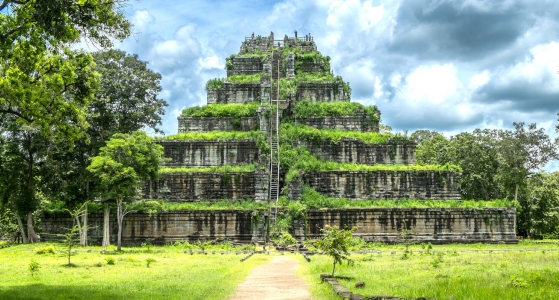
Located atop the Dangrek Mountains and overlooking the Cambodian floodplains, the Preah Vihear Temple is an ancient Hindu temple built during the Khmer Empire. It is close to the border with Thailand and has been a center of tension between the two countries. It was listed as a UNESCO World Heritage Site in 2008.
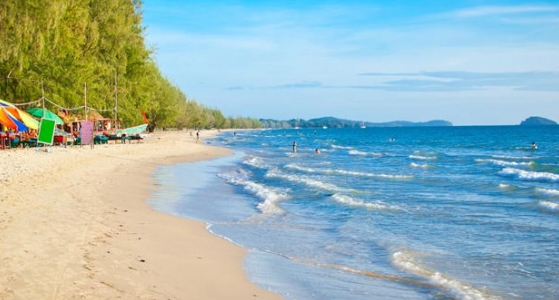
Named after former king Norodom Sihanouk, Sihanoukville is the most popular Cambodian beach destination on the Gulf of Thailand. While the beaches may not be in the same paradise league as some of its Southeast Asian counterparts’, this is still one of the best places to visit, and it is also the main entry point to the offshore islands of Koh Rong and Koh Rong Samloem, which are ideal for snorkeling and for a relaxing beach vacation.

Undoubtedly, Siem Reap is at the top of the must-visited list in Cambodia. Nevertheless, this charming town has emerged as a world-class destination in its own right thanks to a superb selection of restaurants, cafes, and bars. Beyond the town center lie the floating villages on Tonlé Sap Lake, adventure activities such as quad biking and ziplining, and cultural pursuits such as cooking classes and martial arts courses.

Previously recognized as the Pearl of Asia, Phnom Penh is one of the most beautiful French-style cities on the Indochina Peninsula. Today, the city is home to shops, restaurants, high-quality services, river cruises, and tall buildings, as well as many cultural and historical sites important to the city’s culture and history.

Established as a trading center in the 18th century, Battambang lures visitors with many iconic attractions, including the famous Bat Cave. The town has many Angkor-style temples and Buddhist shrines that can be explored on foot or by bicycle. Battambang is also the home of the inspiring Phare Ponleu Selpak, a renowned arts NGO that trains performing artists and hosts inspirational performance art shows combining circus skills with theater and storytelling.

Mondulkiri is a province in eastern Cambodia famous for its natural beauty and wildlife, with lush forests, rolling hills, waterfalls, and rivers. It is also home to many ethnic minorities, such as the Bunong and the Phnong. Mondulkiri is a great place to visit if you love nature and adventure such as trekking, camping, or wildlife watching.

Kratie is a small town on the banks of the Mekong River, famous for the Mekong River dolphins and stunning sunsets. From here, take the ferry to Koh Trong Island, a relaxing place to experience authentic Khmer hospitality at a local homestay and explore by bicycle.

Kep was founded as a colonial retreat for the French elite in 1908, and the town is still full of ruined shells of old villas, destroyed in the days of the Khmer Rouge. Nowadays, it offers a variety of beach activities, such as coral reef snorkeling in the shallow waters. Rabbit Island, off the Kep coast, is popular for its beaches. This rustic island, where electricity is only provided for a few hours in the evening, tends to be visited on day trips.

As one of the most beautiful towns in Cambodia, Kampot draws visitors with its old-world ambience. And it is also known as the land of black peppercorns. Due to their unique flavor, peppercorns are much loved by chefs around the world. In addition, explore Phnom Chhngok Cave, kayak down the river, or drive up Bokor Mountain to see an abandoned French colonial Bokor hill station and a giant Buddha statue.

Ratanakiri, a province in Cambodia’s north-east, is an ideal destination for outdoor lovers. This province is famed for its natural beauty, making it the ideal place for outdoor activities. Virachey National Park to the north, Lumphat Wildlife Sanctuary to the south, and the well-known Yeak Laom Lake and Kachanh waterfalls. Although Ratanakiri Province has few towns, most of the local population lives in villages where they farm the land and maintain a traditional way of life.

Located atop the Dangrek Mountains and overlooking the Cambodian floodplains, the Preah Vihear Temple is an ancient Hindu temple built during the Khmer Empire. It is close to the border with Thailand and has been a center of tension between the two countries. It was listed as a UNESCO World Heritage Site in 2008.

Named after former king Norodom Sihanouk, Sihanoukville is the most popular Cambodian beach destination on the Gulf of Thailand. While the beaches may not be in the same paradise league as some of its Southeast Asian counterparts’, this is still one of the best places to visit, and it is also the main entry point to the offshore islands of Koh Rong and Koh Rong Samloem, which are ideal for snorkeling and for a relaxing beach vacation.

Customize Cambodia
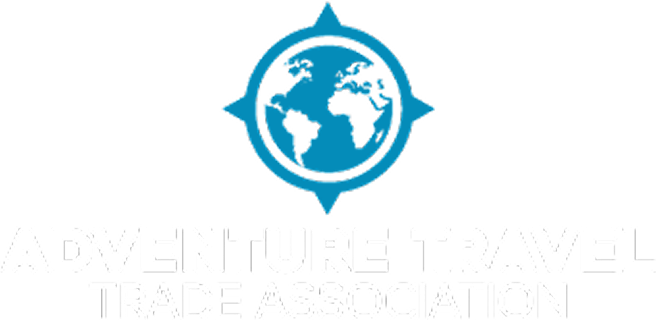
Adventure Travel Trade Association


American Society of Travel Agents
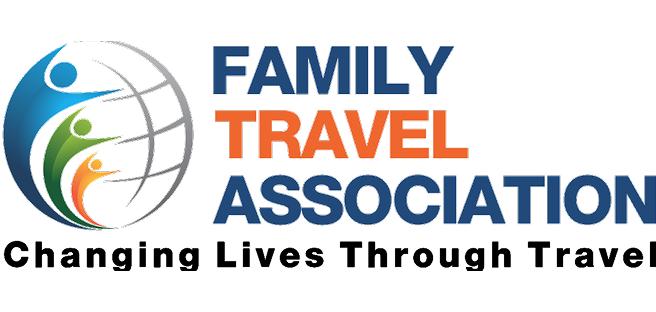
Family Travel Association


TripAdvisor


Wikipedia

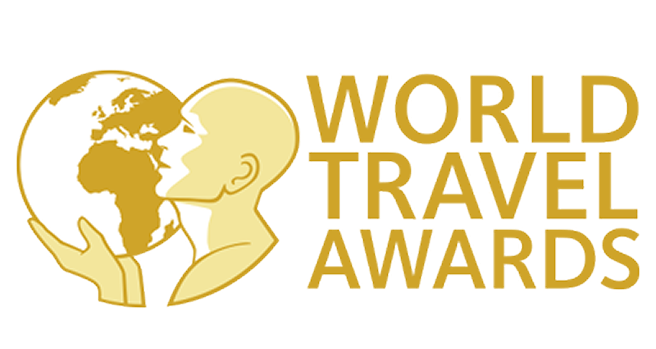
World Travel Awards
With over 15 years of experience in the tourism field, Southeast Asia Travel company has built a solid reputation as experts in designing custom tours across Southeast Asia: Vietnam, Laos, Cambodia, Thailand, Singapore, Malaysia, Indonesia, Myanmar, Philippines... Read more
